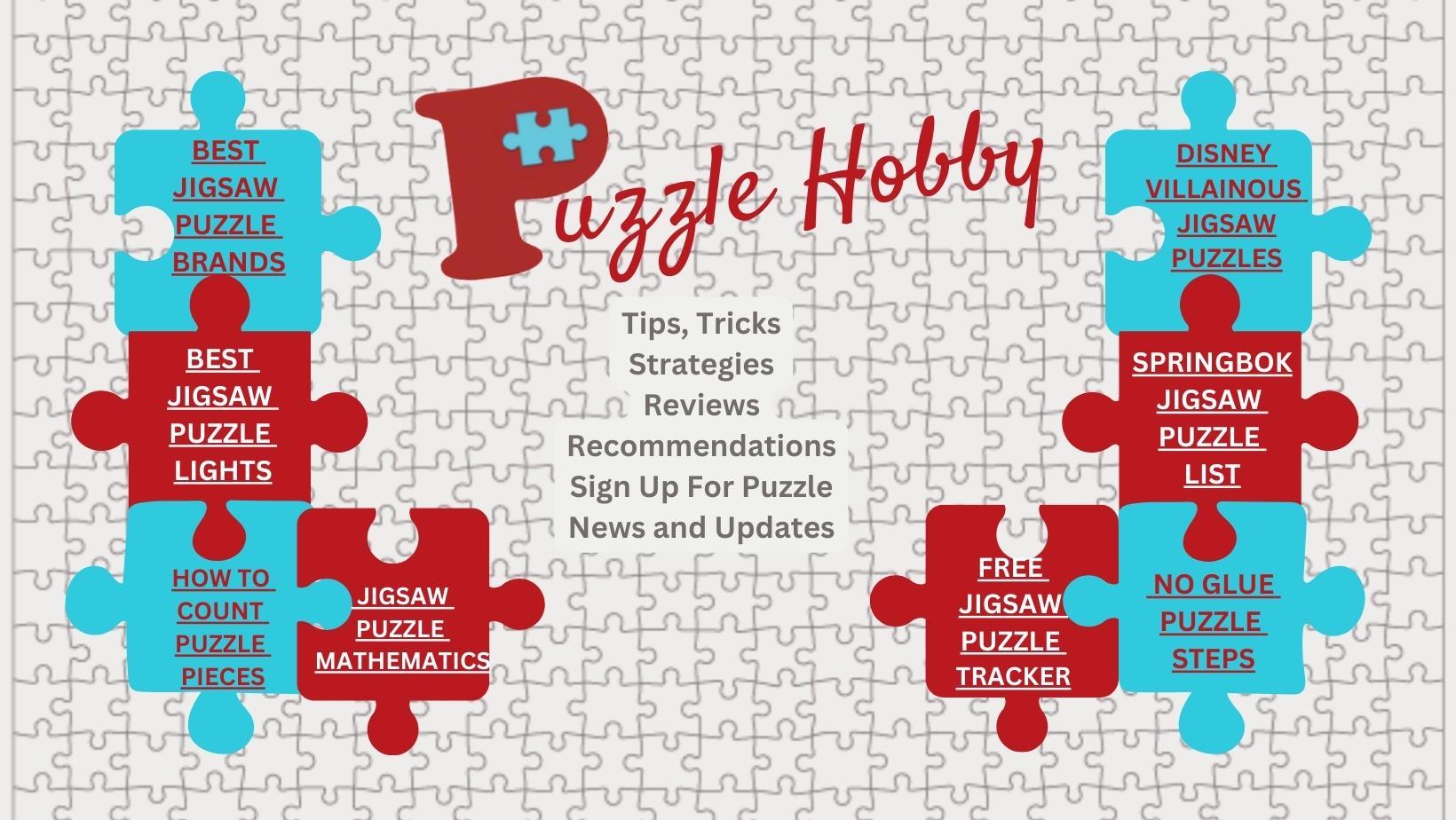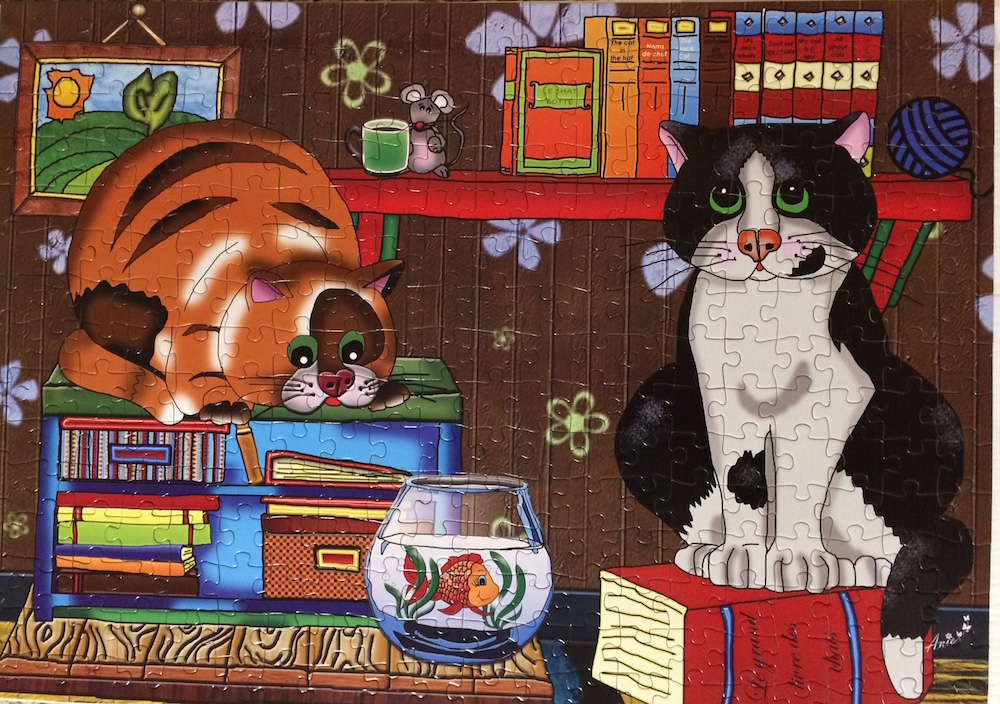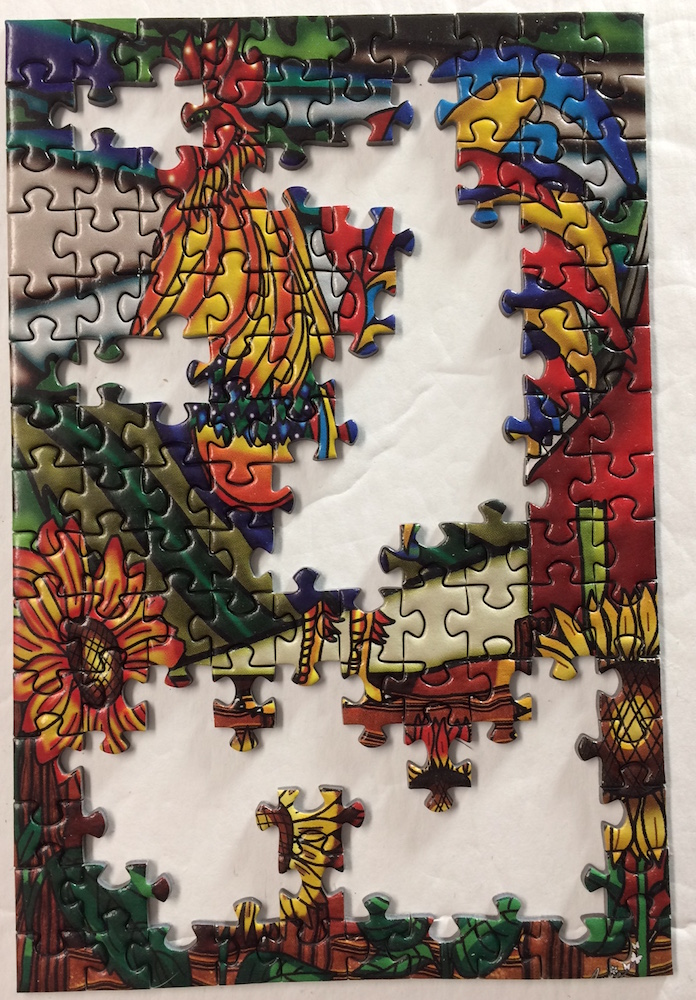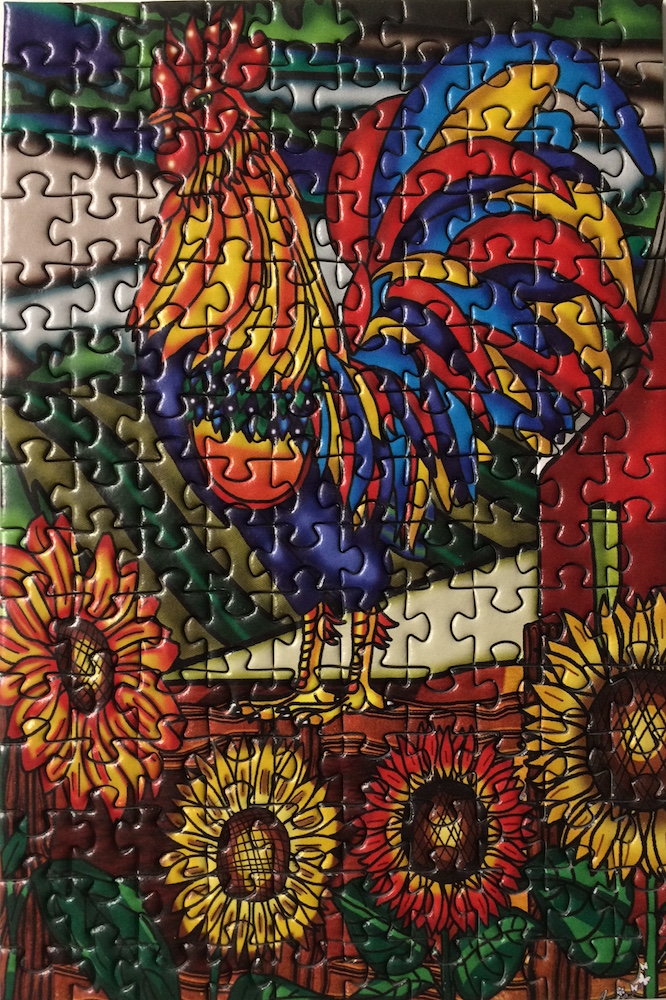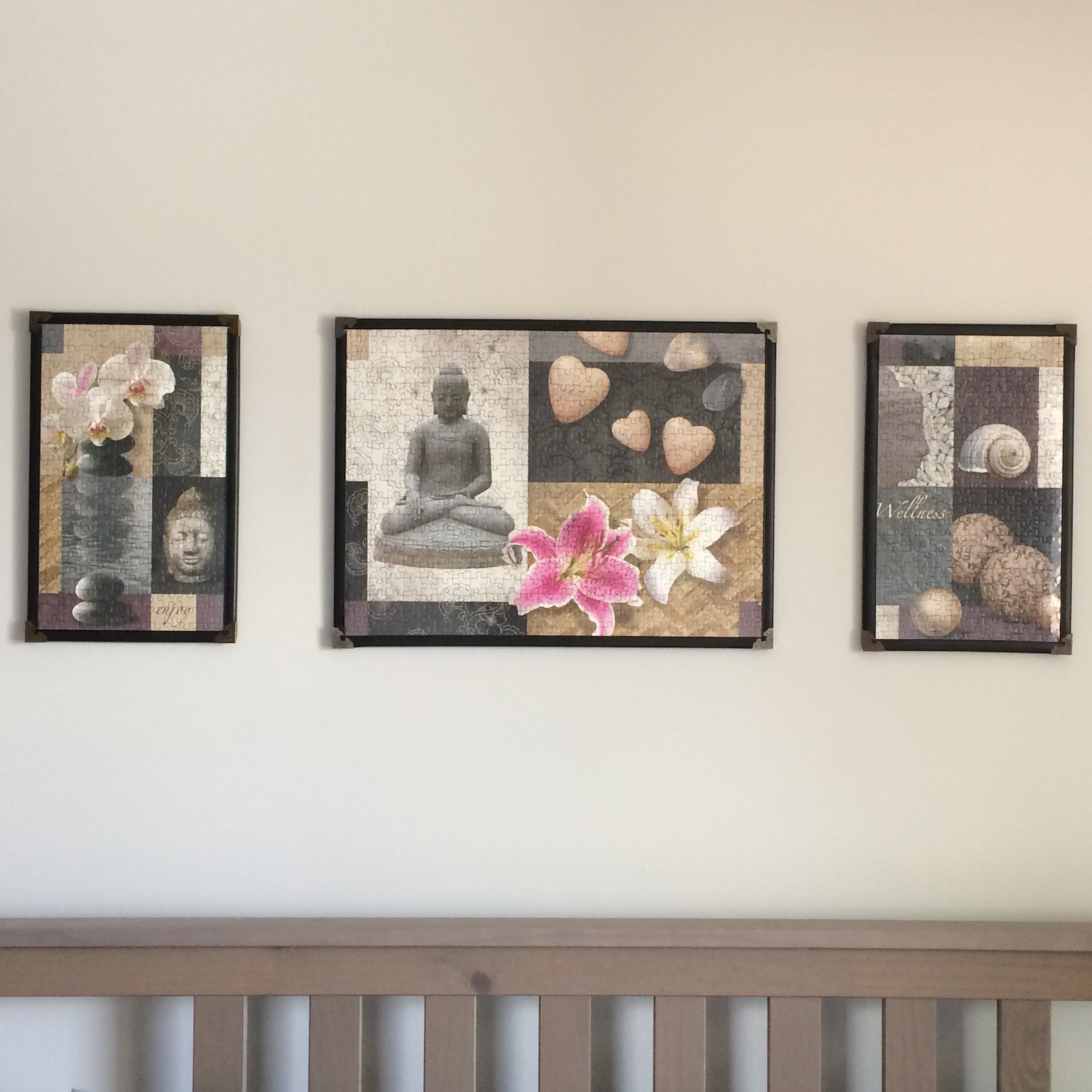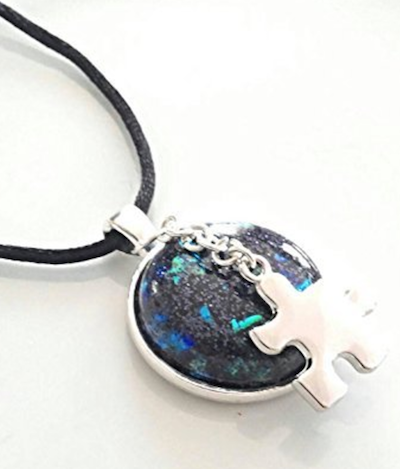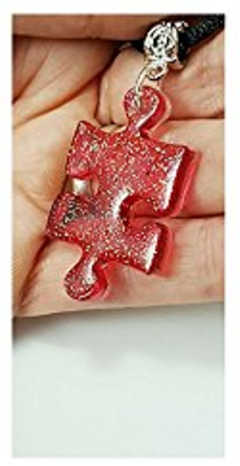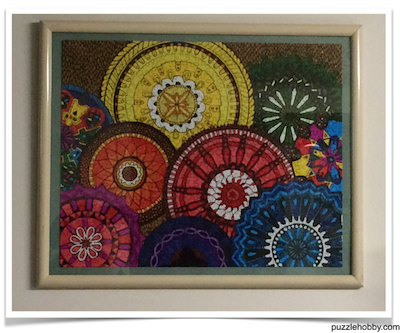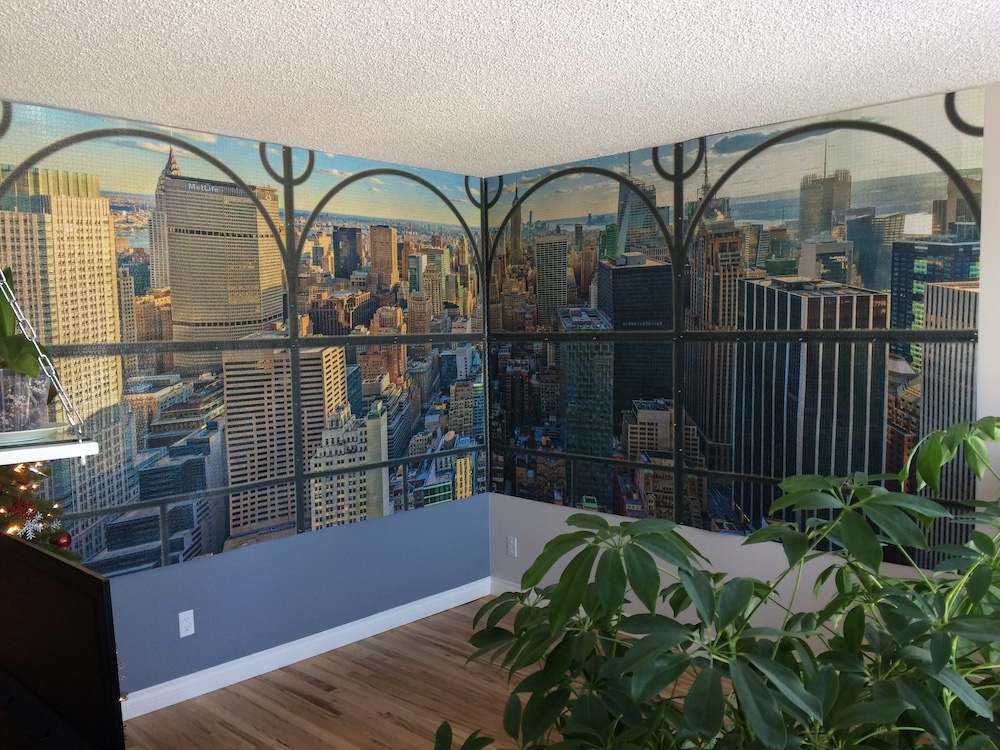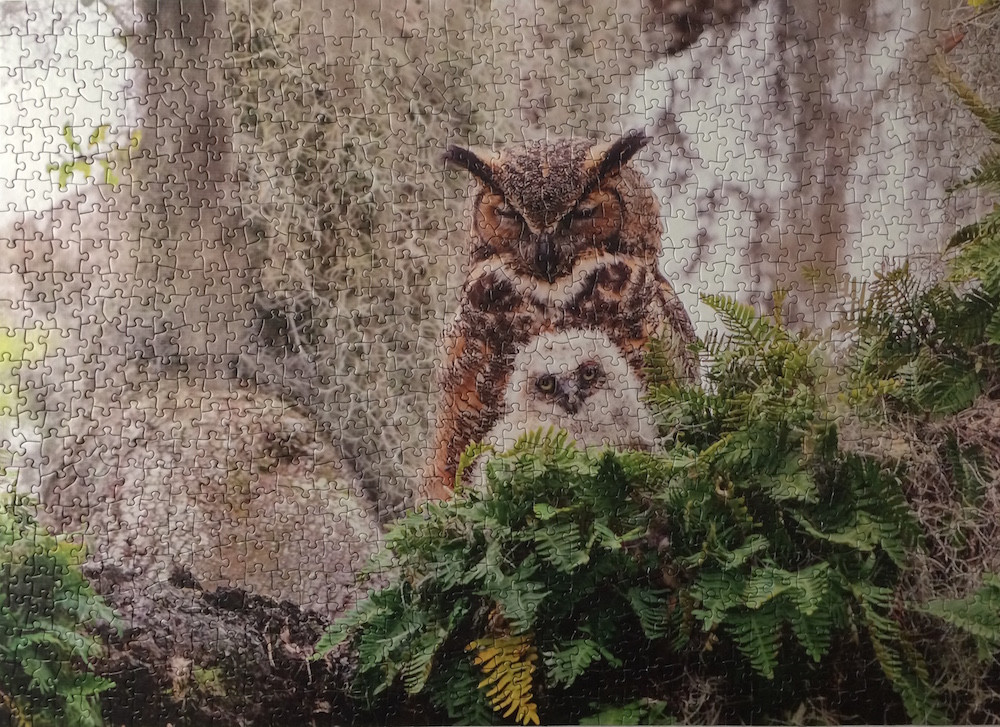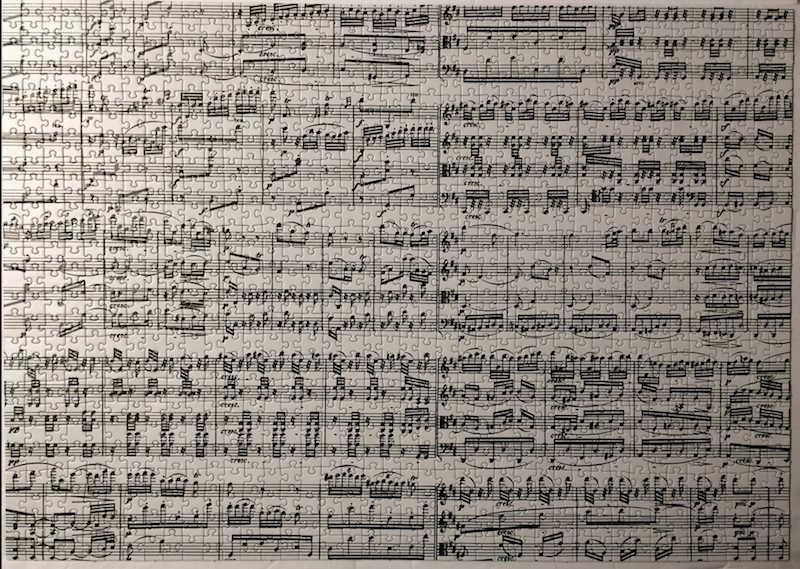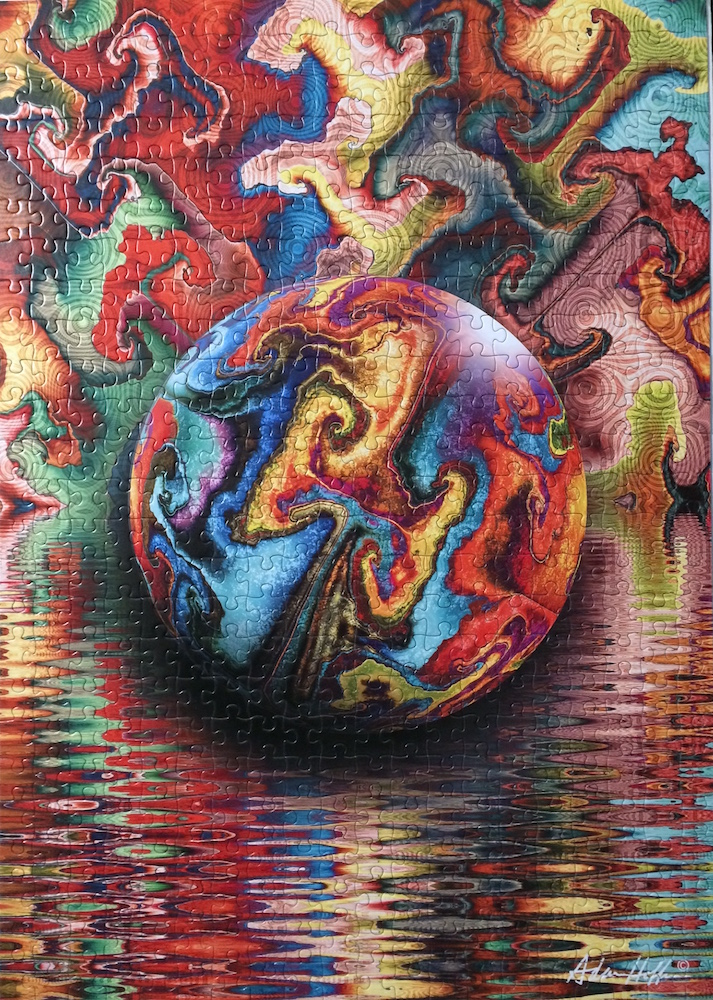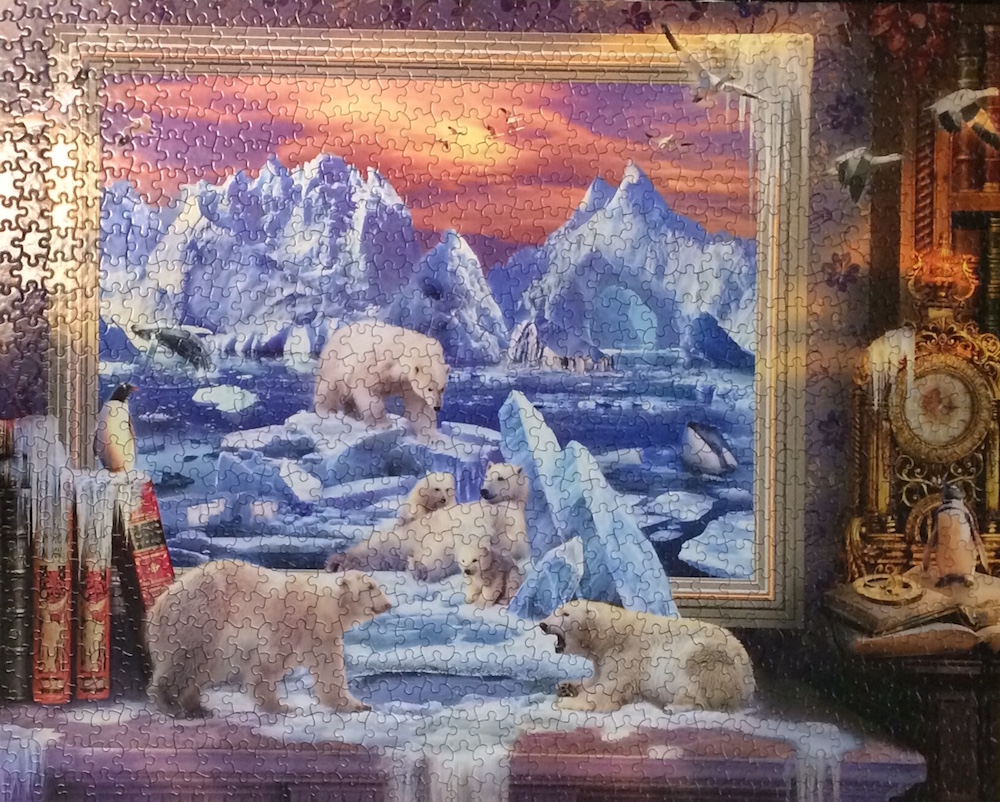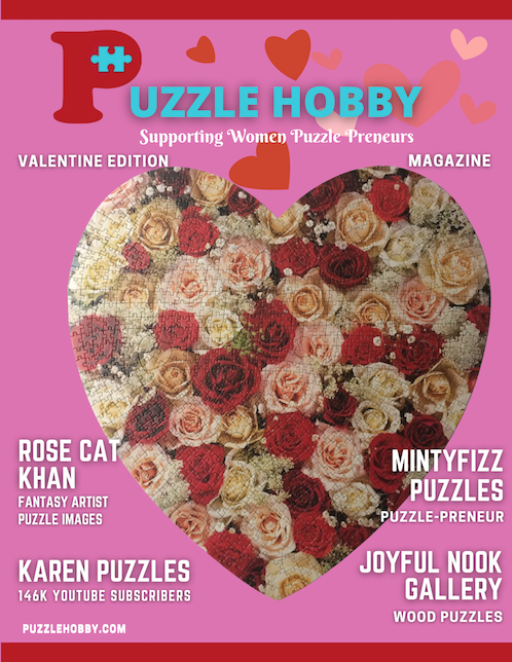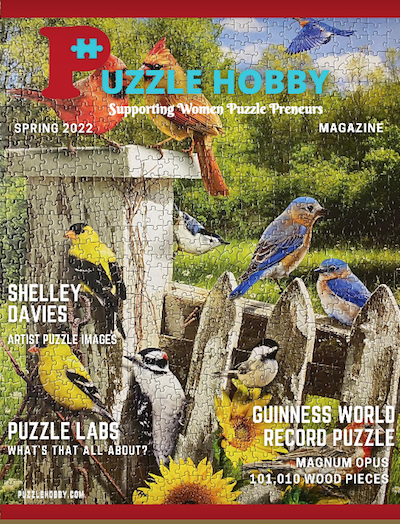 |
 |
- FAQ's 100 Questions
- Best Puzzle Brands
- Activities/Accessories
- Best Puzzle Lights
- Sponsored Reviews
- Sales l Giveaways
- Reap the Benefits
- Get Your Game On!
We are a participant in the Amazon Services LLC Associates Program, an affiliate advertising program designed to provide a means for us to earn fees by linking to Amazon.com and affiliated sites. Also, some of our posts contain other affiliate links and we will be compensated if you make a purchase after clicking on our links.


Top 100 Jigsaw Puzzle FAQs
General, Health Related, Tips and Buying
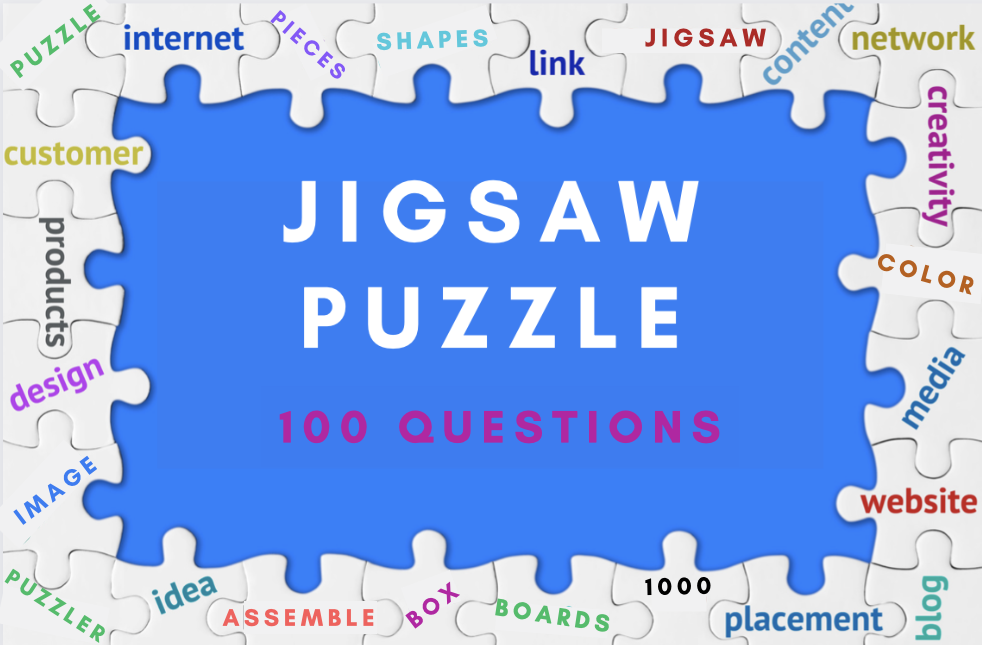
So Puzzle Mate - you are here with a question and/or you are interested in a jigsaw puzzle hobby. First let's share some informational details to get you 'plugged in'.
- There are no rules, right or wrong or ways to cheat when assembling jigsaw puzzles. There's no speed limit and no holds barred.
It's like the Wild West of puzzle-solving, where you can use any means necessary to wrangle those pieces into place - whether it's bribing them with candy, hypnotizing them with a pendulum, or sweet-talking them into submission with your charming puzzle-solving skills.
Assembling jigsaw puzzles is a wild and lawless land where puzzle pieces roam free like wild stallions, and the only way to solve the puzzle is to channel your inner puzzle-shaman and commune with the puzzle gods themselves! And that's for the easy puzzles - no just kidding. Although, you may find yourself in that position with some puzzle images for the most part, the point here is that doing jigsaw puzzles is an individual 'sport' that you determine how you are going to assemble them.
2. You may or may NOT have lost that jigsaw puzzle piece but it's okay, because losing a puzzle piece is like losing a needle in a haystack the size of Mount Everest which makes it very forgivable. It's not uncommon for pieces to escape - sometimes they will show up in your shoe or something. BUT don't rule out the manufacturer.
Truth be told, there are a LOT of puzzles that are shipped with missing or damaged pieces. I know this because I have experienced it more than once. Missing pieces from sealed boxes - it happens more than you think. What also happens, is the Puzzler (inadvertently) blames the Puzzle Company (understandably so) when in fact it is the manufacturer's responsibility to monitor the quality control of Puzzle Company's product - unless said company is (rarely) cutting it's own puzzles.
3. You might be interested to know what the advantages of using jigsaw puzzles have using them as a tool. Health Care providers encourage us to do jigsaw puzzles at any age and your body will silently 'thank you' for.
Here are some mental wellness advantages of doing jigsaw puzzles that also include right-left brain activity and dopamine:
- Boosts dopamine levels: Completing a jigsaw puzzle can activate the reward center of the brain, leading to a release of dopamine, which can improve mood and motivation.
- Increases right-left brain activity: Jigsaw puzzles require both logical, analytical thinking (left brain) and creative, visual-spatial thinking (right brain), which can help improve overall brain function and connectivity.
- Improves problem-solving skills: Jigsaw puzzles require the ability to problem-solve, using both logic and intuition, which can help develop and improve problem-solving skills.
- Reduces the risk of cognitive decline: Engaging in mentally stimulating activities, such as jigsaw puzzles, has been linked to a reduced risk of cognitive decline and Alzheimer's disease.
- Enhances focus and concentration: Completing a jigsaw puzzle requires a high level of focus and concentration, which can help improve these skills in other areas of life.
- Promotes relaxation and mindfulness: Doing a jigsaw puzzle can be a meditative experience that promotes relaxation and mindfulness, reducing stress and anxiety.
- Improves memory: Completing a jigsaw puzzle requires the ability to recall patterns and shapes, which can help improve memory and cognitive function.
In summary, doing jigsaw puzzles can provide numerous mental wellness advantages, including enhancing right-left brain activity, increasing dopamine levels, improving problem-solving skills, reducing cognitive decline risk, enhancing focus and concentration, promoting relaxation and mindfulness, and improving memory.
4. Defining the Best Jigsaw Puzzle Brands query: This statement may be somewhat flawed yet it is the number one searched words that puzzlers often use when sourcing out jigsaw puzzles. If you use those 'keywords' you are not going to get THE 'most popular, good quality, best value AND seller for your money' brand. So, according to my affiliate sales statistics, the Best Jigsaw Puzzle Brands are the G-8 or Great Eight:
- Ravensburger,
- Springbok,
- Sunsout,
- Cobble Hill,
- Eurographics,
- Buffalo Games,
- Gibsons, and
- Educa
However, even though Buffalo Games jigsaw puzzles is in the G8 it is also the highest number of best seller in sales. This could be due to their good, solid quality, huge selection and very reasonable/affordable prices. That's a little take-away tip for you.
Quick Search your questions/answers using the keyboard shortcuts.

Jigsaw Puzzle FAQs General
Here's a List of Top 100 Jigsaw Puzzle questions you asked. They are categorized into four Groups. At the bottom of the article, there's a submission form for any other questions you may have that are not included.
- General Topics
- Health Related Topics
- Tips Topics
- Buying Topics
- Submit Your Question
Of course these questions are not the end of information about jigsaw puzzles but rather topics that are enquired about the most by puzzlers or potential puzzlers. Plus there are more than 100 questions and a submission form below to send in your questions as well.
Disclosure: This post contains Amazon an/or other affiliate links, which means if you make a purchase through these links, we may receive a small commission at no extra cost to you.
General Jigsaw Puzzles FAQs
1. What are jigsaw puzzles?
Jigsaw puzzles are a classic pastime enjoyed by people of all ages. They are a type of puzzle that consists of small, interlocking pieces that fit together to form a larger image. Jigsaw puzzles come in various sizes, shapes, and difficulty levels, with some featuring as few as ten pieces and others having thousands of pieces. These puzzles can be made from a variety of materials, including cardboard, wood, or plastic, and can depict anything from famous artworks to scenic landscapes or even popular movies.
Completing a jigsaw puzzle requires patience, attention to detail, and problem-solving skills. Jigsaw puzzles are a great way to relax, unwind, and challenge your mind, making them a popular choice for both children and adults alike.
2. What are the different types of jigsaw puzzles available?
There are many different types of jigsaw puzzles available, each with its own unique characteristics and appeal. Traditional jigsaw puzzles are the most common type, featuring interlocking cardboard pieces that fit together to form a single image. Wooden jigsaw puzzles are another popular option, with their durable and eco-friendly construction. 3D jigsaw puzzles provide a unique challenge, as they require assembling not only the pieces but also building a 3D structure.
Photo mosaic puzzles are a newer type, which use multiple small photos to create a larger image. There are also children's puzzles, which are specifically designed with simpler designs and larger pieces for younger puzzlers. Finally, specialty puzzles such as glow-in-the-dark puzzles, shaped puzzles, and reduce stress puzzle balls offer unique twists on traditional puzzles. With so many options available, there is a jigsaw puzzle for everyone to enjoy.
3. How many pieces do jigsaw puzzles typically have?
Jigsaw puzzles come in a wide range of sizes, with piece counts varying from just a few pieces to several thousand pieces. The most common piece counts for traditional jigsaw puzzles range from 500 to 1,000 pieces, which are ideal for intermediate to advanced puzzlers who want a challenge. Larger puzzles, with 2,000 or more pieces, are typically reserved for experienced puzzlers who enjoy a true test of patience and persistence.
Smaller puzzles, with 100 to 300 pieces, are great for beginners or younger puzzlers who are just starting out. There are even mini puzzles with only a handful of pieces, which are great for on-the-go puzzling or for people who want a quick and easy challenge. Ultimately, the number of pieces you choose will depend on your skill level, the amount of time you have, and your personal preferences.
4. What age range is suitable for jigsaw puzzles?
Jigsaw puzzles are a great activity for people of all ages, from young children to seniors. While puzzles with larger pieces and simpler designs are best for young children, more complex puzzles with smaller pieces are great for older children and adults. Typically, children as young as three or four can start working on simple puzzles with 25 or 50 pieces, while older children and adults can work on puzzles with 500 or more pieces.
Puzzles are also a great way for seniors to stay mentally active and engaged, and there are even puzzles designed specifically for people with cognitive or physical disabilities. Ultimately, the age range for jigsaw puzzles is vast, and there is a puzzle out there to suit every skill level and interest.
5. What are some popular jigsaw puzzle themes?
Jigsaw puzzles come in a wide variety of themes, so there is a puzzle for just about every interest and taste. Some popular puzzle themes include scenic landscapes, famous artworks, animals, maps, and vintage posters. Sports fans can find puzzles featuring their favorite teams or athletes, while history buffs can enjoy puzzles depicting famous landmarks or events.
There are also puzzles featuring popular movies and TV shows, as well as puzzles specifically designed for children featuring cartoon characters or animals. Additionally, there are seasonal puzzles for holidays such as Christmas or Halloween, Easter, and puzzles featuring vibrant patterns and colors for those who enjoy a more abstract challenge. With so many options available, it's easy to find a puzzle that aligns with your interests and preferences.
6. What are some common mistakes to avoid when working on jigsaw puzzles?
While jigsaw puzzles can be a fun and relaxing activity, there are a few common mistakes that puzzlers should try to avoid. One mistake is not sorting the pieces before starting to assemble the puzzle. Sorting the pieces by color and shape can make the assembly process much smoother and faster. Another mistake is not having enough space to work on the puzzle, which can make it difficult to keep the pieces organized and can lead to frustration.
Puzzlers should also avoid forcing pieces to fit where they don't belong, as this can damage the puzzle and make it harder to complete. Finally, taking breaks and not trying to complete the puzzle in one sitting can help prevent eye strain and frustration. By keeping these tips in mind, puzzlers can avoid common mistakes and enjoy the process of completing a puzzle.
7. How can you ensure all puzzle pieces are present?
To ensure that all puzzle pieces are present before starting to assemble a puzzle, there are a few steps you can take. First, carefully examine the puzzle box and any accompanying materials to determine the number of pieces in the puzzle. Then, open the box and spread out all of the puzzle pieces on a flat surface. It can be helpful to sort the pieces by color or shape to make sure that all pieces are accounted for.
If any pieces are missing, contact the puzzle manufacturer to see if they can send a replacement piece. It's also a good idea to keep the puzzle box and any accompanying materials until the puzzle is complete, as the box can serve as a reference if you're unsure whether a piece is missing. By taking these steps, you can ensure that all puzzle pieces are present and ready to be assembled.
8. What is the difference between traditional jigsaw puzzles and 3D jigsaw puzzles?
Traditional jigsaw puzzles are typically two-dimensional, with a flat surface and pieces that fit together to form a picture or pattern. 3D jigsaw puzzles, on the other hand, have additional dimensions and are designed to create a three-dimensional object. These puzzles often have interlocking plastic pieces that fit together to create a structure, such as a building or monument.
In some cases, 3D puzzles may also have movable parts, such as gears or wheels like these Lego type puzzle projects. While traditional jigsaw puzzles are generally designed to be assembled on a flat surface, 3D puzzles may require a different approach, with pieces being assembled vertically or at different angles. Both types of puzzles can be challenging and rewarding to complete, but 3D puzzles offer a unique and engaging experience that traditional puzzles do not.
9. How can you make your own jigsaw puzzle?
Making your own jigsaw puzzle can be a fun and rewarding DIY project. To start, you'll need a high-quality image or design that you want to turn into a puzzle. You can either print the image onto a piece of cardboard or foam board and then cut it into puzzle pieces using a craft knife or a puzzle cutter. Alternatively, you can use a specialized puzzle-making machine that cuts the pieces for you.
Once you have your pieces, you may want to laminate them or add a clear adhesive film to protect the puzzle and make it more durable. You can also customize your puzzle by adding a message or personalization to the back of each piece. With a little creativity and patience, making your own jigsaw puzzle can be a fun and satisfying project for puzzle enthusiasts of all ages. You can also order personalized puzzles customized to different sizes and number of pieces.
10. How long does it typically take to complete a jigsaw puzzle?
The time it takes to complete a jigsaw puzzle can vary greatly depending on the size, difficulty level, and personal skill and experience of the puzzler. A small, simple puzzle with only a few pieces may take only a few minutes to complete, while a larger and more complex puzzle can take several hours, days, or even weeks to finish. Some experienced puzzlers enjoy the challenge of tackling large and difficult puzzles, while others prefer to work on smaller and simpler puzzles to unwind and relax.
Additionally, working alone or with a group can also affect the amount of time it takes to complete a puzzle. Overall, the time it takes to complete a jigsaw puzzle can vary widely and depends on a number of factors. All that summed up, if you are looking for numbers, an average image may take 6-12 hours or 80-120 pieces per hour is a good scale to measure your timing.
11. What are some common jigsaw puzzle shapes?
Jigsaw puzzles come in a variety of shapes and sizes, ranging from traditional rectangular or square-shaped puzzles to more unique and intricate shapes. Some common puzzle shapes include circular, heart-shaped, and animal-shaped puzzles, which can add an extra level of challenge and excitement to the puzzle-solving experience. Other popular puzzle shapes include puzzles with irregular edges, such as those with pieces that are shaped like animals, flowers, or other objects.
These unique shapes can make the puzzle more difficult to solve and add an element of fun and creativity to the process. Overall, the shape of a jigsaw puzzle can greatly influence the level of challenge and enjoyment a puzzler experiences while solving the puzzle.
12. What are some popular jigsaw puzzle sizes?
Jigsaw puzzles come in a wide variety of sizes, from small and compact puzzles with just a few pieces, to large and complex puzzles with thousands of pieces. The most common puzzle sizes include those with 500, 1000, and 1500 pieces, which are popular among both beginners and experienced puzzlers alike.
For those looking for a greater challenge, puzzles with 2000, 3000, or even 5000 pieces are available, but may require more time and patience to complete. Additionally, some manufacturers offer smaller or larger puzzle sizes, ranging from mini puzzles with just a few pieces to giant puzzles with over 40,000 pieces. The size of a jigsaw puzzle can greatly affect the level of difficulty and the amount of time needed to complete the puzzle, so it is important to choose a size that matches your skill level and available time.
13. What are some popular jigsaw puzzle apps or online games?
In today's digital world, jigsaw puzzle lovers can now enjoy their favorite pastime online through various puzzle apps and games. Some of the most popular puzzle apps include Jigsaw Puzzle Collection HD, Magic Jigsaw Puzzles, and Jigsaw Puzzle World. These apps offer a wide range of puzzle sizes, shapes, and themes to choose from, providing hours of entertainment.
Additionally, there are many websites that offer online jigsaw puzzle games, such as Jigsaw Planet and Puzzle Garage. These games allow users to upload their own images and create custom puzzles to solve. With the increasing popularity of mobile devices, jigsaw puzzle apps and online games have become a convenient way for puzzle enthusiasts to indulge in their hobby anytime and anywhere. Puzzle Hobby has an online games using our own custom images.
14. What are some popular jigsaw puzzle themes for adults?
Jigsaw puzzles have been a popular pastime for adults for generations. Themes for jigsaw puzzles can vary from classic paintings and landscapes to more contemporary designs such as abstract art or movie posters. Popular themes for adult jigsaw puzzles include animals, such as cats or birds, vintage cars, travel destinations, and famous landmarks.
Other popular themes include fantasy art, such as fairies or dragons, and nostalgic designs like vintage advertisements or classic cartoons. Additionally, many adults enjoy challenging themselves with intricate and complex puzzles featuring repeating patterns or optical illusions. Overall, the wide range of themes available for adult jigsaw puzzles ensures that there is something for every taste and interest.
Cartoon and movie characters, like Disney princesses or superheroes, are also popular choices. Puzzles featuring vehicles, like cars, trains, and planes, can be particularly engaging for children who are interested in transportation. Educational puzzles, such as those that teach letters, numbers, and shapes, are also great for younger children who are still learning these concepts.
Finally, puzzles that depict scenes from nature, like oceans, forests, and outer space, can be both visually stunning and informative for kids who are curious about the world around them.
16. What are some popular jigsaw puzzle themes for seniors?
When it comes to jigsaw puzzle themes for seniors, there are many popular options to choose from. Some of the most popular themes include landscapes, animals, flowers, and nostalgic images such as classic cars or vintage advertisements. Additionally, themes such as travel destinations or famous landmarks can be a fun way for seniors to reminisce about past vacations or dream about future trips.
Other popular options for seniors include puzzles with larger and easier to handle pieces, which can be easier on the eyes and hands. Many seniors also enjoy puzzles with vibrant colors and clear images, as these can be easier to see and identify. Ultimately, the best theme for a senior will depend on their individual interests and preferences. There are special jigsaw puzzles for Seniors with dementia too.
17. What are some popular jigsaw puzzle brands for adults?
When it comes to popular jigsaw puzzle brands for adults, there are several options to choose from. One of the most well-known brands is Ravensburger, which is known for its high-quality puzzles with intricate designs and stunning artwork. Other popular brands include Buffalo Games, known for their vivid colors and unique puzzle shapes, and White Mountain Puzzles, which offers a variety of themes and designs to suit all interests.
Eurographics is another popular brand, offering a range of puzzle sizes and designs featuring landscapes, animals, and famous works of art. Other notable brands include Cobble Hill, Schmidt, and Clementoni, which are all known for producing puzzles with high-quality pieces and vibrant colors.
18. What are some popular jigsaw puzzle brands for children?
When it comes to popular jigsaw puzzle brands for children, there are several well-known names in the market. Some of the top brands include Melissa & Doug, Ravensburger, and Mudpuppy. These brands are known for creating high-quality jigsaw puzzles for kids that are not only fun but also educational. Melissa & Doug, for instance, offers a wide range of wooden jigsaw puzzles that are perfect for younger children.
Meanwhile, Ravensburger is known for its high-quality cardboard jigsaw puzzles with popular children's characters like Disney and Pixar. Mudpuppy, on the other hand, specializes in creating puzzles that come in various shapes and sizes, providing kids with a more interactive and engaging experience. With so many options available, parents can easily find a brand that suits their child's preferences and skill level.
19. What are some popular jigsaw puzzle brands for seniors?
When it comes to jigsaw puzzles for seniors, there are several well-respected brands in the market. One of the most popular brands is Ravensburger, which offers high-quality puzzles with various themes and sizes suitable for seniors. Another brand that has gained popularity among seniors is Springbok, known for its intricate and challenging designs.
Additionally, there's White Mountain Puzzles, which produces high-quality puzzles with classic themes and artwork, and Gibsons, a British brand that offers a range of puzzles with charming and nostalgic designs. Finally, there's Piatnik, an Austrian brand that has been producing jigsaw puzzles for over 200 years, offering seniors beautifully crafted and detailed puzzles. These brands offer excellent quality puzzles with pieces that are easy to handle and manipulate, making them perfect for seniors.
20. What is the largest jigsaw puzzle ever made?
At this time, the current largest jigsaw puzzle is the Dowdle, 60K, 8x29 feet, 'What A Wonderful World'. Before that, "Memorable Disney Moments" puzzle, produced by Ravensburger. This puzzle is made up of a staggering 40,320 pieces, measuring 22.3 feet by 6.2 feet when completed. The puzzle features iconic Disney characters and scenes from classic animated films, including Cinderella, Aladdin, and The Lion King.
Assembling these massive puzzles requires patience, persistence, and a lot of space! It's not something that can be completed in one sitting, or even in a few days. However, for dedicated puzzlers looking for a challenge, the Memorable Disney Moments and the Dowdle What A Wonderful World puzzle offers a unique and impressive feat to conquer.
21. What is the smallest jigsaw puzzle ever made?
The current smallest jigsaw puzzle that is known as the "world's smallest jigsaw puzzle" and was created by the manufacturer "Bepuzzled". It measures only 4 inches by 6 inches and consists of 234 pieces. The puzzle features an image of Van Gogh's famous "Starry Night" painting.
Despite its small size, the puzzle provides a challenging and rewarding experience for puzzle enthusiasts who enjoy working with smaller pieces. In recent years, there has been a growing interest in small jigsaw puzzles, with many manufacturers creating puzzles with hundreds or even thousands of tiny pieces. These small puzzles are often portable and can provide a fun and relaxing activity for puzzle lovers on the go.
22. What are some online resources for jigsaw puzzle enthusiasts?
There are many online resources available for jigsaw puzzle enthusiasts, including websites (like this one for instance), forums, and social media groups. Some popular websites include Jigsaw Explorer, which offers a large collection of online puzzles for free, and Puzzle Warehouse, which sells a wide variety of physical puzzles and offers puzzle-related articles and tips.
Jigsaw Planet is another website where users can create and share their own online puzzles. For forums, Puzzle Forum is a great place to connect with other enthusiasts and discuss all things puzzle-related. Additionally, social media platforms like Facebook and Instagram offer many groups and pages dedicated to puzzles, where users can share tips, reviews, and even participate in virtual puzzle swaps.
23. How do you know if a jigsaw puzzle is too easy or too hard?
Determining the difficulty level of a jigsaw puzzle can be tricky, as it largely depends on an individual's experience and skill level. However, there are some factors that can help you determine whether a puzzle is too easy or too hard for you. The number of pieces is a good starting point. If you're just starting out, a puzzle with a lower piece count may be better suited for you.
Additionally, the complexity of the image can also play a role in difficulty level. A puzzle with a simple, uniform image may be easier than one with lots of intricate details. Lastly, the shape of the pieces can also impact the difficulty level, with irregular shapes typically making the puzzle more challenging. Ultimately, it's important to find a puzzle that is challenging enough to keep you engaged, but not so difficult that it becomes frustrating.
24. What are some common themes for jigsaw puzzles?
Jigsaw puzzles come in a wide range of themes, and some common themes are popular among enthusiasts. Scenic landscapes are a classic theme, and many jigsaw puzzles feature stunning images of mountains, oceans, forests, and other natural wonders. Cities and landmarks are also a popular theme, with puzzles showcasing famous buildings and iconic structures from around the world.
Animal lovers can enjoy puzzles featuring a variety of creatures, from domestic pets to exotic wildlife. For those who prefer a more artistic or abstract theme, there are puzzles featuring works of art, patterns, and designs. Other popular themes include food and drink, sports, and nostalgic images from past decades. One of the greatest achievements at PuzzleHobby is the Ravensburger 32,000 piece, New York City Window jigsaw puzzle.
25. What are some jigsaw puzzle games and variations?
Jigsaw puzzles are a popular pastime that have been enjoyed for centuries, and there are a variety of jigsaw puzzle games and variations that add new challenges and excitement to this classic activity. One popular game is the Mystery Puzzle, which features a picture that is not shown on the box and requires the puzzler to solve the mystery as they complete the puzzle.
Another fun variation is the Double-Sided Puzzle, which has a different image on each side, doubling the challenge and fun. Jigsaw puzzles can also be turned into a group activity with the use of a Puzzle Mat, which allows for easy storage and transportation of the puzzle. Additionally, there are online jigsaw puzzles that offer a digital twist on this traditional activity.
26. What are some famous jigsaw puzzle artists?
Jigsaw puzzles have become a popular form of art, and many talented artists have made a name for themselves in this medium. Among the most famous jigsaw puzzle artists is Charley Harper, whose colorful and whimsical designs are highly sought after by collectors and enthusiasts. Another notable artist is Jane Wooster Scott, who is renowned for her highly detailed, Americana-themed puzzles that often feature historical scenes and landscapes.
Other famous jigsaw puzzle artists include Royce B. McClure, who creates beautiful wildlife and nature puzzles, and Thomas Kinkade, whose idyllic paintings of cozy cottages and serene landscapes have been reproduced in many puzzles. The work of these and other talented artists has made jigsaw puzzles not just a fun activity, but a form of art that can be appreciated by people of all ages and backgrounds.
27. What are some unique or unconventional jigsaw puzzle designs?
Jigsaw puzzles are not limited to the traditional square or rectangular shapes. Unconventional puzzle designs can make the activity more challenging and fun for experienced puzzlers. Some unique designs include round-shaped puzzles, 3D puzzles, puzzle cubes, and double-sided puzzles. Additionally, there are also puzzles with irregularly shaped pieces, which can be more difficult to assemble than the standard jigsaw pieces.
Another unconventional design is a magnetic puzzle, which has magnetic pieces that stick to a magnetic board, adding a new level of interaction to the activity. Finally, there are also puzzles with textured pieces, where the pieces have different textures, such as velvet or sandpaper, making them more tactile and engaging. These unique designs provide an exciting alternative to the traditional jigsaw puzzle, and can be enjoyed by puzzlers of all ages and experience levels.
28. Where were jigsaw puzzles invented?
Jigsaw puzzles have a long and fascinating history that spans centuries. The first puzzles, known as "dissected maps," were created in the 1760s by London mapmaker John Spilsbury. However, the jigsaw puzzle as we know it today was not invented until the late 19th century, when puzzle makers began using a special saw with teeth that could cut intricate shapes out of wood.
These early puzzles were mainly used for educational purposes, but they quickly became a popular pastime, especially during the Great Depression. Today, jigsaw puzzles are enjoyed all over the world, and are made from a variety of materials, including wood, cardboard, and plastic. They come in a wide range of sizes and difficulty levels, and can be found in nearly every theme imaginable.
29. What are wasgij reverse perspective jigsaw puzzles?
WASGIJ (Jigsaw spelled backward) is a popular brand of jigsaw puzzles that offers a unique and challenging twist to traditional puzzles. WASGIJ Reverse Perspective puzzles are an intriguing variation that is designed to perplex and entertain puzzlers. Unlike regular puzzles, the image on the box is not what you are trying to create. Instead, the puzzle image is what the people within the image are looking at, which is usually something unexpected or unusual.
This creates a fun and challenging experience that requires you to use your imagination and puzzle-solving skills to complete the picture. WASGIJ Reverse Perspective puzzles are available in various sizes, themes, and difficulty levels, making them suitable for both novice and experienced puzzlers. They are ideal for those who love a good puzzle and are looking for something unique and different.
If you are looking for more information and tips about jigsaw puzzles, here's a free 90 page eBook
Click here to read it:
Tips Jigsaw Puzzles FAQs
30. What are some tips for beginners who are new to jigsaw puzzles?
If you are new to jigsaw puzzles, (you can read the above ebook) there are a few tips that can help you get started. First, start with a puzzle that has a lower piece count, typically between 100 and 500 pieces. This will allow you to develop your skills and build confidence without feeling overwhelmed.
Second, sort the pieces into edge pieces and interior pieces to help you get started.
Third, make sure you have a flat surface to work on and good lighting to avoid eye strain.
Fourth, take breaks and step away from the puzzle if you feel frustrated or stuck.
Finally, enjoy the process and don't worry too much about finishing quickly. Jigsaw puzzles are meant to be a fun and relaxing activity. Remember, there is NO right way or wrong way to do puzzles!
31. What are some strategies for completing jigsaw puzzles quickly?
Completing a jigsaw puzzle quickly can be a fun and satisfying challenge for enthusiasts of all levels. One effective strategy is to start by sorting the pieces according to color and pattern, and then to work on sections with distinct features or shapes. It can also be helpful to identify the border pieces and work on completing the outer edge first.
Additionally, using a puzzle board or surface with a felt mat can help keep pieces organized and make it easier to move completed sections. Another strategy is to work on the puzzle with a partner or in a group, as teamwork can help increase efficiency and provide motivation. Finally, taking regular breaks to rest your eyes and stretch can help prevent fatigue and improve focus.
32. How can you store jigsaw puzzles?
Proper storage of jigsaw puzzles is important to maintain their condition and prevent pieces from being lost or damaged. One common way to store puzzles is to use puzzle mats, which are specially designed to roll up and keep the pieces in place.
Alternatively, you can store puzzles in a puzzle carrier or a puzzle storage box. It's important to make sure that the pieces are separated by either using plastic bags or a puzzle sorter before storing them. It's also essential to keep the puzzle in a dry, cool, and clean environment, away from direct sunlight and moisture, to prevent warping or discoloration. By following these storage tips, you can protect your jigsaw puzzles and ensure they remain in good condition for future use.
33. How do you preserve finished jigsaw puzzles?
Preserving finished jigsaw puzzles is a great way to display your hard work and creativity. To preserve your finished puzzle, you can use puzzle glue or adhesive sheets to keep the pieces together. You can then mount the puzzle on a backing board or frame it for display. Be sure to use acid-free materials to prevent discoloration or damage to the puzzle over time.
Another option is to use a puzzle preserver, which is a specially designed liquid that hardens and seals the puzzle, protecting it from damage and preserving its vibrant colors. Whatever method you choose, be sure to handle the puzzle carefully and follow the instructions closely to ensure a long-lasting, beautiful display. We also use a method called the 'No-glue' method that is very popular.
34. How do you solve a jigsaw puzzle with missing pieces?
Solving a jigsaw puzzle with missing pieces can be challenging, but not impossible. Start by examining the puzzle box and checking if the manufacturer has a replacement service for missing pieces. If that’s not an option, try to recreate the missing piece by tracing the adjacent pieces onto a piece of paper, then cutting out and fitting it into the gap.
Another technique is to create a custom piece by gluing a cardboard or paper cutout to a blank puzzle piece, then drawing the missing piece on it. Remember to double-check your work and make sure the custom piece fits correctly before adding it to the puzzle. If all else fails, embrace the challenge and try to complete the puzzle without the missing pieces.
35. Can you glue jigsaw puzzles together?
Yes, you can glue jigsaw puzzles together as a way of preserving the finished puzzle. Once completed, you can use puzzle glue to hold the pieces together and create a permanent bond. Puzzle glue is a special adhesive that is designed specifically for this purpose, and it can be found at most craft stores. To glue a jigsaw puzzle, first make sure that all the pieces are firmly in place and that the puzzle is completely dry.
Then, carefully apply the glue to the surface of the puzzle, spreading it evenly with a brush or sponge. Allow the glue to dry completely before handling the puzzle. Gluing a puzzle together is a great way to create a lasting keepsake or display piece.
36. What are some creative ways to use finished jigsaw puzzles?
Jigsaw puzzles are not only fun to solve but also provide opportunities for creative and innovative ways to utilize finished puzzles. One of the most popular ways to use completed puzzles is to frame them as artwork. This can create unique and colorful wall décor for your home. Another great idea is to use the puzzle as a tabletop.
To do this, simply glue the completed puzzle onto a table and cover it with a clear sealant. You can also use jigsaw puzzles to create coasters, placemats, and even jewelry. Another fun idea is to donate the completed puzzle to a local senior center or hospital where it can bring joy and entertainment to others. The possibilities are endless, and with a little imagination, you can find creative ways to use your finished jigsaw puzzles.
37. How do you separate jigsaw puzzle pieces?
Separating jigsaw puzzle pieces can be a tricky task, but there are several techniques that can make it easier. One common method is to lay out all the pieces on a flat surface and sort them into groups based on color or pattern. You can also use a puzzle board or tray with sorting sections to keep the pieces organized.
Another option is to slide a piece of cardboard or a thin plastic sheet under a section of the puzzle, and then lift and shake it gently to separate any pieces that are stuck together. Be sure to handle the pieces carefully to avoid bending or damaging them, and take breaks if you start to feel frustrated or overwhelmed.
38. Can you mix and match pieces from different jigsaw puzzles?
Mixing and matching jigsaw puzzle pieces from different puzzles is not recommended, as each puzzle has a unique shape and cut, and the pieces are unlikely to fit together correctly. While it may be tempting to try to complete a puzzle with missing pieces by using pieces from another puzzle, it is unlikely to work well.
Mixing puzzle pieces can also lead to confusion and frustration, as the colors and patterns may not match up correctly. It's better to either try to find the missing puzzle pieces or to start a new puzzle altogether.
Additionally, mixing and matching pieces from different puzzles can damage the puzzles and make them unusable in the future. IF you can find a puzzle company that uses the same cutting grid, then yes, you can mix the puzzles. See Tim Klein's example of artwork.
39. How can you make sure your jigsaw puzzle is level and flat?
Making sure your jigsaw puzzle is level and flat can greatly enhance your puzzling experience. One easy way to achieve this is by using a puzzle board or mat, which typically comes with a flat surface and raised edges to keep the puzzle pieces in place. You can also place a piece of cardboard or foam board underneath the puzzle to provide additional support and prevent bending.
Another option is to use a puzzle glue to fix the pieces together once you have completed the puzzle. This will not only keep the puzzle flat but also make it easier to move or display. Finally, avoid exposing the puzzle to humidity or temperature changes, which can cause warping and make the puzzle pieces difficult to fit together properly.
40. How can you protect your jigsaw puzzle from damage while working on it?
Protecting your jigsaw puzzle from damage is crucial to ensure its longevity and to make sure all your hard work doesn't go to waste. Firstly, using a puzzle board or a piece of cardboard underneath your puzzle can help prevent the table or surface underneath from scratching the puzzle.
Additionally, investing in a puzzle mat can help protect your puzzle while you're working on it and can easily be rolled up and stored when you're not working on it. Another tip is to handle the puzzle gently and avoid forcing pieces that don't seem to fit together.
Finally, keeping your workspace clean and free from debris can prevent dirt and dust from getting onto the puzzle and potentially damaging it. By following these tips, you can ensure your jigsaw puzzle stays protected and in great condition.
41. How can you prevent your jigsaw puzzle from sliding around while working on it?
Preventing your jigsaw puzzle from sliding around while working on it is essential to keep it intact and to avoid any unwanted stress. There are a few ways to prevent the puzzle from sliding around while working on it. First, you can use a puzzle mat with an anti-slip surface. Second, you can place a piece of felt or a non-slip shelf liner underneath the puzzle to provide traction.
Another method is to use puzzle glue sheets to fix the puzzle pieces together. These glue sheets will hold the puzzle pieces together and provide stability. You can also use puzzle boards or puzzle easels to keep the puzzle upright and stable. These methods will help you avoid any disturbance while working on your jigsaw puzzle.
42. Can you complete a jigsaw puzzle without looking at the picture on the box?
Completing a jigsaw puzzle without looking at the picture on the box is certainly possible but can be challenging, especially for larger and more complex puzzles. One strategy is to focus on grouping pieces by color and pattern, and then work on assembling the groups into larger sections. Another approach is to start with the edges and corners of the puzzle and then move inward.
Additionally, some puzzlers prefer to cover the picture on the box with a sheet of paper or cloth to increase the challenge and make the experience more rewarding. It's also helpful to have good lighting and a comfortable working space to avoid eye strain and fatigue. With patience and persistence, anyone can complete a jigsaw puzzle without relying on the picture on the box.
43. How do you choose the right level of difficulty for a jigsaw puzzle?
When it comes to choosing the right level of difficulty for a jigsaw puzzle, there are a few things to consider. First, it's important to take into account your own experience and skill level. If you're new to jigsaw puzzles, it's a good idea to start with an easier puzzle with fewer pieces. Additionally, consider the image on the puzzle. More complex images with lots of similar colors or patterns may be more challenging than those with distinct, contrasting elements.
Another factor to consider is the size of the puzzle. Larger puzzles with more pieces will naturally be more difficult than smaller ones. Keep in mind that the level of difficulty can greatly impact the enjoyment you get from completing the puzzle, so choose carefully!
That said, it's possible that what appears to you an easy puzzle, may have hidden traits (duplicate shape pieces or paint brush strokes) to make it more challenging. I have also found that some images totally surprised me with how easy it was compared to looking difficult.
44. How do you choose a jigsaw puzzle for a specific occasion or holiday?
Choosing a jigsaw puzzle for a specific occasion or holiday is a great way to add some extra fun and excitement to your celebration. For example, for Christmas, you might want to choose a jigsaw puzzle with a festive winter scene or holiday motif. For Valentine's Day, a puzzle featuring hearts or romantic imagery might be perfect.
When choosing a puzzle for a specific occasion, consider the interests and preferences of the people who will be working on it, as well as the overall theme of the event. You can also look for puzzles that are designed specifically for certain holidays or occasions. Don't forget to consider the level of difficulty as well, as you want to make sure the puzzle is enjoyable for everyone involved.
45. How do you frame a completed jigsaw puzzle?
Framing a completed jigsaw puzzle is a great way to preserve and display your hard work. Before framing, ensure that the puzzle is completely finished and that all the pieces are securely in place. You can use puzzle glue to keep the pieces together.
Then, measure the puzzle and choose a frame that fits the dimensions. Lay the puzzle face down on a flat surface and carefully slide the backing board of the frame underneath it. Flip the puzzle and backing board over and secure the puzzle in place with tape or adhesive putty.
Finally, insert the secured puzzle into the frame and add any additional hardware or hanging materials. There are more detailed steps in the following posts:
- How To Glue Your Jigsaw Puzzle
- Try The 'No Glue' Method For Jigsaw Puzzles
- Framed Jigsaw Puzzles
46. What are some common jigsaw puzzle frame sizes?
When it comes to framing your completed jigsaw puzzle, choosing the right frame size is crucial. The most common jigsaw puzzle frame sizes are 16x20 inches, 18x24 inches, and 24x30 inches. These sizes are widely available and can accommodate most standard-sized puzzles.
However, keep in mind that the exact size you need may vary depending on the dimensions of your puzzle. It's always a good idea to measure your puzzle before purchasing a frame to ensure a perfect fit. Some puzzle enthusiasts prefer custom frames to get a more personalized look, which can come in various sizes and styles.
Whatever size you choose, make sure to select a high-quality frame to protect and display your puzzle for years to come.
47. How can you display completed jigsaw puzzles?
There are several ways to display completed jigsaw puzzles, depending on your preference and available space. One option is to frame the puzzle and hang it on the wall. To frame a puzzle, you will need to carefully slide the puzzle onto a foam board or cardboard backing, then secure it with puzzle glue or adhesive tape.
Another option is to use a puzzle storage system that allows you to mount the puzzle on a backing and display it on a tabletop or bookshelf. You can also use a puzzle mat or board to display the puzzle temporarily while you enjoy it before taking it apart.
Whatever display method you choose, it's important to protect the puzzle from damage and keep it flat to maintain its integrity.
48. What are some jigsaw puzzle accessories that can help with completion?
There are many accessories available that can help with jigsaw puzzle completion. Some of the most popular accessories include puzzle mats, puzzle glue, sorting trays, and puzzle roll-up mats. Puzzle mats allow you to easily roll up your puzzle and store it when you're not working on it, while puzzle glue can help keep your puzzle pieces in place once you've completed it.
Sorting trays are helpful for keeping your puzzle pieces organized and separated by color or pattern, and puzzle roll-up mats allow you to work on your puzzle in a smaller space and easily store it away when you're finished. Other useful accessories include puzzle boards, puzzle frames, and magnifying glasses to help with smaller puzzle pieces or fine details.
49. How do you clean jigsaw puzzles?
Cleaning jigsaw puzzles is an important step to keep them looking their best and prolong their lifespan. One of the easiest and most effective ways to clean a jigsaw puzzle is to use a soft-bristled brush to gently remove any dust or debris from the surface.
You can also use a damp cloth or sponge with mild soap and water to clean the puzzle, but be sure to avoid getting the pieces too wet, as this can cause warping or damage. Another popular method is to use a puzzle preserver, which is a special adhesive that helps to seal and protect the puzzle. This can also help to prevent any damage caused by moisture or humidity.
50. How do you handle missing or damaged jigsaw puzzle pieces from a new puzzle?
If you find that your new jigsaw puzzle is missing pieces or has damaged pieces, there are several options you can consider. Firstly, contact the manufacturer as soon as possible to request a replacement or refund. They may also be able to send you the specific missing or damaged piece if you provide them with the puzzle's name, size, and number of pieces.
Another option is to try to find a replacement piece from a puzzle piece exchange group or website, where puzzlers can trade or sell individual pieces or puzzles. Finally, if the puzzle is still usable despite the missing or damaged piece, you may choose to complete it anyway or use it for crafting projects. It's important to thoroughly check a new puzzle before starting it to ensure all pieces are present and in good condition.
There is always the Jigsaw Doctor IF you REALLY want your puzzle to remain perfect as you plan to keep it or gift it to a loved one. We have not tried their service so we do not have a recommendation.
51. What are some popular jigsaw puzzle storage solutions?
Jigsaw puzzle enthusiasts know that finding a good storage solution is key to keeping their puzzle pieces organized and protected. There are several popular options available, including puzzle storage mats, puzzle storage boards, and puzzle storage cases.
Puzzle storage mats are a great choice for those who want to keep their work-in-progress puzzles safe and secure. These mats are typically made from felt or similar materials and provide a soft, non-slip surface for working on your puzzle. Puzzle storage boards, on the other hand, are rigid and provide a flat surface for assembling and storing your puzzles.
They can be easily slid under a bed or couch for convenient storage. Lastly, puzzle storage cases are designed specifically to store and protect your completed puzzles. These cases come in various sizes and shapes and are ideal for those who like to keep their puzzles intact and ready to display.
52. How can you make a challenging jigsaw puzzle easier?
If you have a challenging jigsaw puzzle that is making you frustrated, there are some things you can do to make it easier. One option is to sort the pieces by color or pattern, so you can group similar pieces together and work on them as smaller sections.
You can also work on the border pieces first to create a frame for the puzzle. Another strategy is to work on smaller sections of the puzzle at a time, rather than trying to complete the whole thing at once. This can help you feel like you are making progress and keep you motivated to continue.
Lastly, you can take a break from the puzzle and come back to it later with fresh eyes and a clear mind.
53. How do you find the missing piece of a jigsaw puzzle?
Finding a missing jigsaw puzzle piece can be frustrating, but there are a few steps you can take to increase your chances of success. First, check the immediate area where you're working on the puzzle, including the floor and any nearby tables or chairs.
You can also try looking inside the puzzle box or bag to see if the piece may have gotten stuck inside. If you still can't find the missing piece, you may want to search online for jigsaw puzzle replacement pieces or contact the puzzle manufacturer directly to request a replacement. Some companies offer free or low-cost replacement pieces, so it's worth checking before giving up on the puzzle altogether.
Finally, if all else fails, consider using a jigsaw puzzle glue to permanently attach a similarly-colored piece in the missing spot. Read this article for more details: How to Replace Missing Pieces
54. How do you transport a completed jigsaw puzzle?
Transporting a completed jigsaw puzzle can be tricky, as you don't want the pieces to get dislodged or damaged. One option is to use a puzzle roll-up mat, which allows you to roll the puzzle up and transport it safely. Another option is to use a specialized jigsaw puzzle carrier case, which is designed to hold the completed puzzle securely in place during transport.
If you don't have access to these options, you can carefully slide the completed puzzle onto a piece of cardboard or foam board and secure it in place with tape or rubber bands. Make sure to handle the puzzle gently and keep it flat during transport to avoid any damage to the pieces.
If you are transporting a large puzzle you can read this article to see how we 'sandwiched' our assembled puzzle between boards. New York City Window 32,000 piece jigsaw puzzle.
55. How can you donate or recycle old jigsaw puzzles?
If you have completed jigsaw puzzles that you no longer want or need, you can donate them to a variety of organizations or recycle them. Charitable organizations such as hospitals, senior centers, and schools often accept puzzles as donations, as they can provide a fun and engaging activity for individuals of all ages. You can also donate your puzzles to local libraries, community centers, or shelters.
Another option is to recycle your puzzles, either by donating them to a recycling center or repurposing the pieces into other craft projects. Some companies even specialize in recycling jigsaw puzzles and using the materials to create new products.
Whatever method you choose, donating or recycling your old jigsaw puzzles is a great way to give back to your community and reduce waste.
56. How do you choose the right size puzzle?
Choosing the right size puzzle is important for a satisfying puzzle experience. The size of a puzzle is usually measured by the number of pieces it contains. The most common sizes are 500, 1000, and 2000 pieces, but puzzles can range from a few dozen pieces to over 40,000 pieces.
When choosing the right size puzzle, consider the age and skill level of the person or group who will be completing it, as well as the available space for puzzling. A larger puzzle may require more time and patience, but can also provide a greater sense of accomplishment upon completion.
It's also important to consider the subject matter and level of detail in the puzzle image, as a complex image may require more pieces to capture all the details. Overall, choose a puzzle size that will provide a fun and challenging puzzle experience without being too overwhelming.
57. What are some advanced jigsaw puzzle techniques?
There's only so many ways to assemble a puzzle, so to defined advanced is doing more than 'scraping the box for pieces. If you are a puzzle solver and are looking to take your skills to the next level (beyond scraping the box), there are a few advanced jigsaw puzzle techniques that you can try.
One technique is to sort pieces by shape and color. This means grouping together pieces that have the same shape or color, which can make it easier to find matches.
Another technique is to work on the puzzle from the center outwards. This allows you to build a frame and then work on smaller sections of the puzzle.
Additionally, you can try to identify specific patterns or designs in the puzzle, such as repeating shapes or color schemes, to help guide your progress.
Finally, some puzzle enthusiasts enjoy the challenge of solving puzzles with irregular or non-standard piece shapes, which can make for a unique and challenging experience.
58. How do you deal with difficult or complex puzzles?
Dealing with difficult or complex puzzles requires a patient and systematic approach. The first step is to sort the pieces into groups according to color, pattern, or shape. Then, you can start working on the sections that have a clear edge or border.
After that, focus on the smaller details within each section. It's important to take frequent breaks to avoid eye strain and mental fatigue. You can also use puzzle aids such as magnifying glasses, sorting trays, and puzzle glue to make the process easier.
Another helpful technique is to work on the puzzle with a partner or in a group, as this can provide a fresh perspective and additional support. Remember to enjoy the process and don't get discouraged if it takes longer than expected.
59. How do you organize your puzzle pieces?
Organizing your puzzle pieces is a crucial step to completing your jigsaw puzzle efficiently. Firstly, sort the pieces by color, pattern, or shape. You can use a puzzle board with sorting trays or boxes to keep the pieces separated.
Another option is to use Ziploc bags and label them for different sections of the puzzle. Sorting the edge and corner pieces separately is also helpful. You can use a whiteboard or poster board to keep track of your progress and arrange the pieces in groups. As you complete different sections, keep them separate from the unsolved pieces.
Organizing the puzzle pieces helps you to visualize the puzzle's progress and identify which pieces are missing or misplaced. You may find that you can recall 'seeing that piece' and know where to locate it.
60. How do you work on a jigsaw puzzle with a group?
Working on a jigsaw puzzle with a group can be a fun and social activity. Here are some tips to make the experience more enjoyable:
Overall, working on a jigsaw puzzle with a group can be a great way to socialize and have fun while completing a challenging and rewarding task.
61. How do you display a finished jigsaw puzzle?
There are several ways to display a finished jigsaw puzzle, depending on your personal preference and the size of the puzzle. One option is to use a puzzle mat and glue to preserve the completed puzzle and then frame it. Another popular option is to use a puzzle storage system or puzzle board that allows you to display your puzzle without damaging it.
Additionally, you can use puzzle frames or puzzle storage boxes to showcase your finished puzzles. Some people even use magnetic frames or hanging hardware to display their completed puzzles on a wall. No matter which method you choose, it's important to handle your completed puzzle carefully and protect it from damage while on display.
62. How do you store and organize multiple puzzles?
Storing and organizing multiple jigsaw puzzles can be a challenge, but there are several ways to keep your collection tidy and accessible. One popular method is to use stackable storage containers or bins, which can be labeled and easily stacked on top of one another.
Another option is to use a puzzle portfolio or case, which allows you to store completed puzzles flat and protect them from dust and damage. You can also use a rolling puzzle mat or storage cart to keep your puzzles in progress organized and out of the way.
Finally, consider using a dedicated shelf or cabinet to store your puzzles and puzzle-related accessories, such as puzzle glue, puzzle boards, and sorting trays.
63. How do you transport a finished jigsaw puzzle?
Transporting a finished jigsaw puzzle can be tricky, as you don't want to risk ruining all of your hard work. One option is to use a jigsaw puzzle mat, which is designed to securely hold and roll up your puzzle for transport.
Another option is to carefully transfer the puzzle to a large piece of cardboard or foam board, using a flat piece of paper or cardboard to slide under the puzzle and lift it. Once the puzzle is on the board, you can secure it with tape or adhesive sheets, and then carefully transfer it to your desired location.
It's important to handle the puzzle gently and avoid any sudden movements that could cause the pieces to shift or come apart.
64. How do you choose the right puzzle for a child?
Choosing the right puzzle for a child can be a great way to encourage their development and keep them engaged in a fun activity. It's important to consider their age and skill level when selecting a puzzle. Young children may benefit from simpler puzzles with larger pieces, while older children can handle more complex puzzles with smaller pieces.
Additionally, choosing a puzzle with a theme or subject that the child is interested in can help keep them engaged and motivated. Puzzle manufacturers often provide recommended age ranges and piece counts, so be sure to check these before making a purchase.
Overall, selecting the right puzzle for a child can help build their problem-solving and spatial reasoning skills, as well as provide a fun and engaging activity.
65. How do you encourage children to do jigsaw puzzles?
Jigsaw puzzles are a great activity for kids, as they can help develop a number of important skills, including hand-eye coordination, problem-solving, and patience. To encourage children to do jigsaw puzzles, it's important to make the activity fun and engaging. One way to do this is to choose puzzles with their favorite characters or themes.
Additionally, consider doing the puzzle with them and making it a family activity. Providing positive feedback and encouragement can also help build their confidence and make them more likely to continue with the activity. Start with simpler puzzles and gradually increase the difficulty as they become more comfortable with the activity.
Finally, try to create a designated puzzle area with good lighting and a comfortable workspace, as this can help make the experience more enjoyable.
66. How do you introduce jigsaw puzzles to someone who has never done one before?
Introducing someone to jigsaw puzzles for the first time can be a great way to spark their interest and help them develop critical thinking and problem-solving skills. To get started, choose a puzzle that is appropriate for their age and skill level. It's best to start with a smaller puzzle with larger pieces, as this can help build confidence and momentum.
Once you have the puzzle, lay out the pieces and encourage them to start sorting them by color, shape, or pattern. Offer guidance as needed, but let them take the lead and figure things out on their own.
Be patient and supportive, and emphasize the fun and satisfaction that comes with completing a puzzle.
67. How do you deal with puzzle pieces that are damaged or worn?
Dealing with damaged or worn puzzle pieces can be frustrating, but there are a few solutions to salvage them. If a piece is simply bent or has a small tear, you can try to gently bend it back into shape or use a small piece of clear tape to mend it. Tweezers and fine tipped glue bottles may be helpful in repairing the paper-thin layers of the cardboard pieces.
For missing pieces, you can contact the puzzle manufacturer to see if they offer a replacement service. If the puzzle is a vintage or rare edition, you may need to search for missing pieces from other sources. Some puzzle enthusiasts even create custom replacement pieces using clay or resin.
However, if a piece is severely damaged, it may be best to retire it and continue with the puzzle as best as you can.
68. How do you make sure your puzzle pieces are clean and dust-free?
To ensure that your puzzle pieces are clean and dust-free, there are a few steps you can follow. Firstly, make sure to handle the pieces with clean hands, as dirt and oils from your fingers can transfer onto the puzzle pieces.
Secondly, lay out a clean and flat surface to work on, such as a table or mat. Next, use a soft-bristled brush or a lint roller to gently remove any dust or debris from the pieces. You can also use a microfiber cloth or a damp cloth to wipe the pieces clean, but be careful not to get the pieces too wet.
Finally, store your puzzle pieces in a sealed bag or container to prevent dust from settling on them. By following these steps, you can ensure that your puzzle pieces are clean and dust-free, which will make it easier and more enjoyable to complete your puzzle.
69. How do you handle jigsaw puzzles with complex or intricate designs?
Some complex and intricate jigsaw puzzle images might seem like trying to solve a Rubik's cube blindfolded but with the right techniques, it can be done successfully. Puzzlers are always impressed to see the Musical Notes puzzle I assembled. The title itself is a good indication of how much color is involved.
One important tip is to start by separating the puzzle pieces into groups based on color or design elements. This will help you identify which pieces belong to certain sections of the puzzle. Another helpful technique is to work on the puzzle in sections, starting with the edges and then moving onto the more complex areas.
Taking breaks and stepping back to get a better perspective can also be beneficial. Additionally, having good lighting and a comfortable workspace can make working on a complex puzzle easier. Overall, patience and attention to detail are key when working on jigsaw puzzles with intricate designs.
70. How do you work on a puzzle with a lot of similar colors or patterns?
Working on a puzzle with a lot of similar colors or patterns can be a challenge, but there are some strategies you can use to make the process easier. One technique is to sort the pieces by color or pattern and work on one section of the puzzle at a time.
Another approach is to look for distinct shapes or patterns within the larger color or pattern and focus on those. It can also be helpful to take breaks and step away from the puzzle to give your eyes and brain a rest. Additionally, using good lighting and a magnifying glass can make it easier to differentiate between similar pieces.
Finally, don't be afraid to ask for help from others or consult the image on the box to get clues about where pieces may fit.
While assembling the black and white Musical Notes puzzle there was not much sense in trying to sort it by colors. I did sort by pieces that were more white than black and more black than white. I did pull out the outer edges while I was doing that. Next, I sorted according to sideways and top-to-bottom.
Then the next sort was according to the puzzle shapes which I laid out onto foam boards that sat on the left and right side of the Musical Notes assembling area. This extreme sorting process was like defusing a bomb but I know it made a big difference in completing the puzzle.
71. How do you work on a puzzle with a lot of repeating patterns?
Working on a puzzle with a lot of repeating patterns or a bzillion details can be challenging, but with a few tips and tricks, it can become more manageable. First, sort the pieces by color and pattern. This will help you identify which pieces belong to each section of the pattern.
Next, focus on one section at a time, working from the edges inward. This will help you avoid confusion and prevent pieces from being misplaced. If the pattern is particularly complex, consider using a reference image or a picture of the completed puzzle as a guide.
Download the assembled image from the internet (if you can locate a good size image that has the entire image displayed) and save it to your desktop. Open the file with your image program and use the magnify-enlarger to see the area you are having trouble with. Ideally you will be able to locate the shapes/colors/details of the pieces to help locate them from your sorted pieces. That is a case of work smarter-not harder!
Lastly, take breaks often to prevent eye strain and mental fatigue. With patience and perseverance, completing a puzzle with repeating patterns can be a rewarding experience.
72. How do you work on a puzzle with a lot of pieces of the same shape?
Working on a puzzle with many pieces of the same shape can be a challenge, but there are a few strategies that can help. There is a difference between false fits and grid cut pieces where the is only horizontal and lateral cuts. False fits tend to be puzzle cut patterns where the grid is used more than once on the same image.
First, sorting the pieces by color and pattern can help you identify which pieces fit together. Additionally, you can try working on small sections of the puzzle at a time, focusing on one area and finding all the pieces that belong there before moving on to the next section.
It can also be helpful to look for unique features in the puzzle, such as a distinctive shape or pattern, that can serve as anchor points to build around. With patience and perseverance, even puzzles with many identical pieces can be completed successfully.
73. How do you work on a puzzle with irregularly shaped pieces?
Working on a puzzle with irregularly shaped pieces can be challenging, but also quite rewarding. These are known as random cut or wanky/wonky cut or irregular cuts. To get started, it's important to have a clear workspace where you can spread out the pieces and see them clearly.
Look for the edges and corner pieces first, as these will help you establish the overall shape of the puzzle. Then, sort the remaining pieces by color or design, depending on what's most prominent in the puzzle. Take your time and experiment with different combinations until you find the right fit for each piece.
If you're struggling, take a break and come back to the puzzle later with fresh eyes. Trust me - that does work! Finally, don't forget to celebrate when you finish – a puzzle with irregular pieces is quite an accomplishment!
74. How do you work on a puzzle with multiple images or scenes?
Working on a puzzle with multiple images or scenes can be a fun and rewarding challenge. Think of this type of puzzle image as a collage or several mini puzzles. First, it's important to sort the pieces by scene or image to make the process easier. You can also work on one scene at a time, starting with the easiest one and gradually moving on to more difficult ones.
To help differentiate between scenes, it's helpful to work on a puzzle board with sections or to place a sheet of paper or cardboard between the different sections. Another helpful technique is to study the box image and familiarize yourself with the different scenes before starting the puzzle. With patience and persistence, you'll be able to complete the puzzle with multiple images or scenes.
75. How do you work on a puzzle with a glossy or reflective finish?
Working on a puzzle with a glossy or reflective finish can be a challenge, kinda like luring you into a world of puzzle-induced madness! There are a few things you can do to make the process easier. First, make sure you have good lighting to avoid any reflections that can make it difficult to see the pieces. You can also try using a puzzle board or mat with a non-reflective surface.
When handling the pieces, try to touch them as little as possible to avoid leaving fingerprints on the glossy surface. Additionally, you can use a soft cloth to gently wipe down the pieces before beginning the puzzle to remove any dust or debris that may be clinging to the glossy finish.
With these tips, you can successfully work on a puzzle with a glossy or reflective finish.
76. How do you work on a puzzle with a matte or non-reflective finish?
Working on a puzzle with a matte or non-reflective finish is generally easier compared to a glossy or reflective puzzle since the lack of glare allows for better visibility. However, it is still important to make sure the lighting is adequate and positioned correctly to minimize shadows on the puzzle pieces.
A well-lit workspace can also help prevent eye strain and make the puzzle-solving experience more enjoyable. It is also important to be careful when handling matte or non-reflective puzzles as the finish can be more prone to chipping or flaking if the pieces are forced together. Gentle handling and proper storage can help ensure the longevity of the puzzle.
77. How to solve jigsaw puzzles faster?
Solving jigsaw puzzles is an enjoyable pastime, but sometimes you may want to complete a puzzle more quickly. To solve jigsaw puzzles faster, start by organizing the pieces by color or design to create smaller groups of pieces to work with. You can also sort pieces by shape, looking for the ones with flat sides and straight edges first. Use the picture on the box as a guide to help you identify where certain pieces may fit, and work on the edges first to create a frame for the puzzle.
Additionally, using techniques like gluing sections together or using a puzzle roll-up mat can help you pick up where you left off and make progress faster. Remember, practice makes perfect, so keep working on puzzles regularly to improve your skills and speed however I can speak from experience - the speed I picked up was the sorting. My speed for puzzling has reached its max and hasn't changed over the past 5 years.
78. How to do jigsaw puzzles without the picture?
Doing a jigsaw puzzle without a picture can be a fun and challenging way to test your puzzle-solving skills. To start, sort the pieces by color and pattern, and group the edge pieces to create the frame. If the puzzle has any unique or distinct shapes, look for those pieces first. Use trial and error to determine where pieces fit together and don't be afraid to move pieces around until you find the right spot.
It's also helpful to focus on specific areas of the puzzle, such as a particular object or pattern. As you progress, keep track of which pieces you have already tried in a separate pile to avoid duplication.
Lastly, take breaks if you feel stuck to return with fresh eyes and renewed focus. Some puzzlers have said they never use the box image - I can't imagine NOT using the image...just sayin'
Health Related Jigsaw Puzzles FAQs
79. Do jigsaw puzzles increase IQ?
While there is no conclusive evidence that jigsaw puzzles can increase IQ, research has shown that they have numerous cognitive benefits. Jigsaw puzzles can help to improve visual-spatial reasoning, problem-solving skills, attention to detail, and memory. These skills are all important components of cognitive function, which is related to overall intelligence.
Additionally, jigsaw puzzles can be a fun and engaging way to reduce stress and improve mood, which can also contribute to cognitive performance. While completing jigsaw puzzles alone may not increase IQ, incorporating them into a balanced and stimulating lifestyle may positively impact overall cognitive function.
80. What are some benefits of doing jigsaw puzzles?
There are many benefits of doing jigsaw puzzles, both for adults and children. One of the primary benefits is that puzzles help improve cognitive skills, such as problem-solving, spatial reasoning, and attention to detail. They can also help reduce stress and improve mood, making them a great activity for relaxation and mindfulness. Doing puzzles alone or with others can also improve social skills and promote teamwork and collaboration.
Additionally, puzzles provide a sense of accomplishment and satisfaction upon completion, boosting confidence and self-esteem. They are also a great way to pass the time and engage the brain in a fun and stimulating activity. Overall, doing jigsaw puzzles has numerous benefits for the mind and body, making them an excellent addition to anyone's routine.
81. How can jigsaw puzzles help with cognitive development?
Jigsaw puzzles have been found to be effective tools for cognitive development. They require problem-solving skills, attention to detail, and the ability to think critically. Doing jigsaw puzzles on a regular basis can improve memory, spatial awareness, and hand-eye coordination.
Additionally, it can increase creativity, reduce stress and anxiety, and boost mood. Jigsaw puzzles also help with cognitive flexibility, which is the ability to switch between different thought processes and adapt to new situations. This skill is important in daily life as it helps people to approach problems with a more open-minded and flexible attitude.
Here's an example of how doing jigsaw puzzles may have helped Rob Gronkowski- Football come out of retirement to help Tom Brady win a Super Bowl down in Tampa Bay. Read about Rob Gronkowski
You just knew that Gronk had to be on the list. One of the more colorful players in the NFL during his career, Gronk was always very active in the off-season and led quite an active social life. On the gridiron, however, he was a fierce competitor and while playing the position of tight end, Gronk suffered his fair share of concussions. After his retirement, he began a program to improve his cognitive functions. Through this, he started putting together jigsaw puzzles. It must have worked pretty well because he came out of retirement to reunite with his QB Tom Brady down in Tampa Bay to win a Super Bowl.
Overall, jigsaw puzzles can be a fun and engaging way to improve cognitive skills and enhance overall mental wellbeing.
82. How can jigsaw puzzles help with stress relief?
Jigsaw puzzles can be a great way to relieve stress and promote relaxation. The process of putting together a puzzle can help calm your mind and provide a sense of accomplishment. When working on a puzzle, you can focus your attention on the task at hand and forget about your worries for a while. This can help reduce anxiety and lower stress levels.
Additionally, the repetitive motion of picking up and placing puzzle pieces can have a meditative effect, similar to mindfulness or yoga. Doing puzzles can also provide a break from technology and screens, which can contribute to eye strain and mental fatigue.
Overall, working on jigsaw puzzles can be a fun and enjoyable way to destress and improve your mental health.
83. Are there any benefits of doing jigsaw puzzles for children with autism?
Yes, there are several benefits of doing jigsaw puzzles for children with autism. Jigsaw puzzles can help improve a child's cognitive skills, hand-eye coordination, and spatial awareness. It can also be an effective tool for improving problem-solving skills, attention to detail, and memory.
Additionally, completing a puzzle can provide a sense of accomplishment and boost self-esteem in children with autism. It can also be a calming and therapeutic activity, helping to reduce anxiety and stress levels. Jigsaw puzzles can also be used as a social activity, helping children with autism to develop communication and socialization skills.
Overall, jigsaw puzzles can be an effective and enjoyable activity for children with autism to improve their cognitive, motor, and social skills.
84. How can you improve your skills in completing jigsaw puzzles?
Improving your skills in completing jigsaw puzzles involves several factors. First, start with a puzzle that's appropriate for your skill level. If you're a beginner, start with a puzzle with fewer pieces, and then gradually move up to more challenging puzzles.
Second, make sure to work in a well-lit and comfortable area, as this can help reduce eye strain and increase your focus.
Third, sort the pieces by color or pattern, and work on smaller sections at a time. This will make it easier to spot the right pieces and make progress faster.
Finally, take breaks as needed to avoid burnout and frustration. With practice, you can improve your skills and complete more challenging puzzles like a puzzle-solving ninja!
85. What are some educational benefits of doing jigsaw puzzles?
Jigsaw puzzles offer various educational benefits, making them a valuable addition to learning environments. First, jigsaw puzzles help develop problem-solving and critical thinking skills by requiring the player to analyze and solve problems. They also improve spatial reasoning skills by requiring players to manipulate pieces to fit into the puzzle's larger picture.
Furthermore, completing jigsaw puzzles can increase patience, focus, and perseverance. Jigsaw puzzles are also great for developing hand-eye coordination and fine motor skills, making them an ideal tool for young children's development. Moreover, they can teach children about shapes, colors, numbers, and letters, making them a fun and interactive way to reinforce early learning concepts.
Lastly, completing jigsaw puzzles together can promote social skills, teamwork, and communication.
86. Are puzzles good for anxiety?
Yes, puzzles can be an effective way to alleviate anxiety. When you engage in a jigsaw puzzle, it can help you take your mind off of your worries and focus on the task at hand. This shift in attention can reduce feelings of stress and anxiety.
Over the years I have discovered that a lot of puzzlers have expressed how they have "puzzled their way through the grief of a loved one or pet" AND I can personally vouch for that myself. Here's my story attached to this shaped heart puzzle.
Additionally, completing a puzzle can give a sense of accomplishment and boost your mood, which in turn can further reduce anxiety. Puzzles can also serve as a mindfulness practice, as they require concentration and focus on the present moment.
By regularly engaging in jigsaw puzzles, you may develop greater mindfulness and relaxation skills that can help you manage anxiety in the long-term.
87. What personality type likes puzzles?
They're like puzzle-whisperers, who can hear the faintest murmurs of a puzzle's secrets and unlock its mysteries with just a touch of their fingertips! But, with kidding aside...
There is no one personality type that universally likes puzzles, as different people can find different types of puzzles appealing for different reasons. However, people who enjoy puzzles tend to be patient, detail-oriented, and enjoy a challenge. These individuals often possess strong problem-solving skills and enjoy engaging in activities that require mental focus and concentration.
People who enjoy jigsaw puzzles, in particular, often appreciate the satisfaction of completing a complex task and enjoy the tactile sensation of manipulating the puzzle pieces. Additionally, those who enjoy puzzles may also have a love of learning, as many puzzles can provide a means of expanding one's knowledge and cognitive abilities. They are also have an attraction for artwork and nature at her best as images are often a determining factor for choice.
Buying Jigsaw Puzzles FAQs
88. What are some popular jigsaw puzzle brands available on Amazon?
When it comes to jigsaw puzzle brands available on Amazon, there are plenty of options to choose from. Some popular brands include Ravensburger, Buffalo Games, White Mountain Puzzles, Cobble Hill, and Springbok. Ravensburger is a well-known brand that offers high-quality puzzles with various themes and piece counts. Buffalo Games offers a range of puzzles, including panoramic and glow-in-the-dark puzzles, as well as puzzles featuring popular licenses like Disney and Star Wars.
White Mountain Puzzles offers puzzles with unique and nostalgic designs, while Cobble Hill offers environmentally-friendly puzzles made from recycled materials. Springbok is another popular brand known for its high-quality puzzles with vibrant colors and intricate designs. No matter what your preference, there is sure to be a jigsaw puzzle brand on Amazon that suits your needs.
PuzzleHobby has put together an (#AD) Amazon Store with products that we recommend and/or have used ourselves. It is an affiliate store so when you buy from our store, we may get a small commission at no extra cost to you. You won't even notice as it's a drop in the bucket compared to the joy you'll feel!
89. What are some popular jigsaw puzzle subscription services?
Get ready to level up your puzzle game like never before with the convenience of a simple subscription. Jigsaw puzzle subscription services have become increasingly popular in recent years, offering enthusiasts the opportunity to receive regular puzzle deliveries right to their doorstep.
Some of the most popular jigsaw puzzle subscription services include Puzzle Warehouse's Puzzle of the Month Club, which delivers a new puzzle every month from a variety of brands, difficulty levels, and themes. Another popular subscription service Buffalo Games Jigsaw Puzzle Subscription, which offers a variety of puzzle sizes and types, including wooden puzzles and 3D puzzles.
Micro Puzzles also offers a Puzzle of the Month Club, featuring a new puzzle every month with various themes. These subscription services offer convenience and variety to jigsaw puzzle enthusiasts who want to expand their collections and enjoy new challenges regularly.
90. What are some popular jigsaw puzzle table designs?
Jigsaw puzzle tables are specially designed tables that are used for assembling and sorting puzzles. They come in a variety of sizes and shapes, with different features to suit different needs. Some of the most popular jigsaw puzzle table designs include portable foldable tables, adjustable tilt tables, and tables with built-in drawers or sorting trays.
Portable foldable tables are a great option for those who want to work on their puzzles in different locations or have limited space, while adjustable tilt tables allow users to work at a comfortable angle. Tables with built-in drawers or sorting trays are ideal for those who like to keep their puzzle pieces organized. Some popular brands of jigsaw puzzle tables include Jigthings, Bits and Pieces, and Ravensburger.
91. How can you create a custom jigsaw puzzle from a personal photo?
Creating a custom jigsaw puzzle from a personal photo is a great way to have a unique and personalized puzzle. First, choose a high-quality photo with good resolution and upload it to a jigsaw puzzle maker website or software. Many online puzzle makers allow you to customize the size, shape, and number of pieces, and some even offer special features like text, borders, and filters.
Once you have set your preferences, the website or software will generate a preview of the puzzle, and you can make any final adjustments before ordering. Some popular websites for creating custom jigsaw puzzles include Shutterfly, Puzzle You, and Personalization Mall. With a little creativity and patience, you can turn your favorite memories into a one-of-a-kind puzzle for yourself or as a gift.
92. What are some jigsaw puzzle accessories that can make puzzle-solving easier or more enjoyable?
There are several jigsaw puzzle accessories available that can make the puzzle-solving process easier and more enjoyable. One of the most popular accessories is a puzzle board, which provides a flat surface to work on and can be easily stored when not in use. Puzzle mats are also helpful, as they allow you to roll up your puzzle in progress and save it for later.
Sorting trays or bins can help you keep track of puzzle pieces and prevent them from getting lost. Some puzzlers also like to use a puzzle caddy, which provides a convenient place to store all their puzzle pieces and accessories. A puzzle glue can be used to preserve the finished puzzle, and a magnifying glass can help you see small details more clearly. Finally, a good lighting source can also enhance the puzzle-solving experience.
93. Where/how to find jigsaw puzzles near me?
If you are looking to find jigsaw puzzles near you, there are a few options to explore. One of the easiest ways to find a local puzzle store is to simply search online. You can use search engines such as Google and Bing to find puzzle stores in your area. Another option is to search for hobby or game stores in your city or town, as these stores may also carry a selection of jigsaw puzzles.
Additionally, you can check with your local library or community center to see if they have any puzzle clubs or events. Another option is to look for jigsaw puzzles at major retailers such as Walmart or Target, which often carry a selection of puzzles in their stores.
Behold, brand new, never-before-seen puzzles, sealed in their packaging, ready to be unwrapped and conquered by the master puzzler in you can be found at your local Goodwill type stores and outlets.
Finally, you can also consider shopping for jigsaw puzzles online, as there are many online retailers that offer a wide variety of puzzles with convenient shipping options.
94. Which jigsaw puzzle brand is best?
Choosing the best jigsaw puzzle brand depends on personal preferences and requirements. Some of the popular brands that offer high-quality jigsaw puzzles include Ravensburger, Buffalo Games, Cobble Hill, White Mountain Puzzles, and Eurographics. These brands use premium quality materials, offer a wide range of designs and sizes, and have a good reputation among puzzle enthusiasts.
Ravensburger is known for its high-quality puzzle pieces and wide range of designs, while Buffalo Games offers a range of challenging and innovative designs. White Mountain Puzzles has a nostalgic feel with its vintage and Americana-themed puzzles, while Eurographics is known for its educational puzzles. Cobble Hill is known for it random cuts, great quality and anti-glare images.
With every new brand of jigsaw puzzle you try, you'll be transported to a whole new world of endless adventure and excitement, where the only limits are the ones you set for yourself. Ultimately, it's best to try different brands and determine which one suits your needs and preferences the most.
95. Can I sell finished, completed jigsaw puzzles?
Yes, you can sell completed jigsaw puzzles. There are several online marketplaces where you can sell your completed puzzles, such as eBay, Etsy, and Amazon. Additionally, some local puzzle stores may also buy completed puzzles from you.
However, it is important to note that the value of a completed puzzle is generally lower than that of a new and unopened puzzle. This is because completed puzzles are considered used items and may not have all of the original pieces or be in pristine condition.
Therefore, if you plan on selling completed puzzles, it is recommended to price them accordingly and disclose any potential issues, such as missing pieces or slight damage to the box or puzzle itself.
Never fear, your unwanted items have a higher calling - they have the power to bring joy and comfort to those in need! Donate your un-sellable items to hospitals, senior care homes, or Goodwill type stores and you'll feel a warm glow inside knowing that you've made a positive impact on the world.
Your generosity will be felt by those who need it most, as they bask in the warmth of your goodwill and feel the love that you've shared with them. So don't just discard your unwanted items - turn them into a beacon of hope for those who need it most and spread joy to the world!
96. What makes a good gift for jigsaw puzzlers?
If you are looking for a gift for someone who loves jigsaw puzzles, there are a few things to keep in mind. First, consider the skill level of the puzzler. If they are just starting out, a puzzle with a lower piece count might be a good choice. Alternatively, if they are more experienced, a puzzle with a higher piece count or a more challenging design might be a better fit.
Another option is to choose a puzzle featuring a favorite hobby or interest of the recipient, such as a puzzle of a famous painting or a sports team logo. Additionally, consider puzzle accessories such as puzzle boards, storage solutions, and puzzle glue that can help make puzzling more enjoyable.
Truth be told, more often than not, buying a puzzle for a jigsaw puzzle is better received IF the Receiver can pick out their own choice of puzzle. With a jigsaw puzzle gift card, you'll open up a world of excitement and adventure for your 'Receivee', as they explore a vast array of puzzles and discover the one that speaks to their soul.
The sheer joy and anticipation of choosing their own puzzle will leave them feeling like a kid in a candy store, with each option more tantalizing and tempting than the last. So why give a gift that will be quickly forgotten when you can give the gift of joy and excitement that will be remembered? Give a jigsaw puzzle gift card and watch the magic unfold!
97. What is a quick way to remove puzzle dust?
Puzzle dust - the bane of every puzzle enthusiast's existence. If you've ever struggled with the fine layer of debris that seems to coat your puzzle after every use, you know the frustration all too well. Fortunately, there's a quick and easy solution to this common problem.
Simply take a clean, dry paintbrush and gently sweep it over the surface of the puzzle, taking care to remove any dust or debris. For stubborn dust, try using a can of compressed air or a soft, dry cloth. With this simple technique, you can keep your puzzle looking pristine and ready for your next round of puzzling fun!
98. Is sorting jigsaw puzzle pieces faster than sorting through the puzzle box as you go?
Sorting jigsaw puzzle pieces before assembling them can be a useful technique to speed up the puzzle solving process. When you first open a puzzle box, it can be overwhelming to sort through all the pieces and try to figure out where to start.
By sorting the pieces based on color, shape, or edge pieces beforehand, you can have a better understanding of what pieces you have and where they might fit. This can save time in the long run by preventing you from searching through the box for a particular piece.
So, while sorting through the puzzle box as you go can be a fun challenge, sorting the pieces first can be a useful strategy for more efficient puzzling.
99. Who are some famous or popular people who do jigsaw puzzles?
Jigsaw puzzles have long been a beloved pastime for people from all walks of life, including some famous and popular individuals. Queen Elizabeth II of England is known to be a fan of puzzles, as is former US President Bill Clinton.
Other notable puzzlers include actor Hugh Jackman, singer Taylor Swift, and author Dan Brown. Even Albert Einstein was known to enjoy the challenge of a good puzzle. With such a diverse range of famous puzzlers, it's clear that jigsaw puzzles are a pastime that appeals to people of all backgrounds and interests.
100. What is the most expensive jigsaw puzzle ever sold at auction?
The most expensive jigsaw puzzle ever sold at auction is "The Map of the World" by Dutch artist Dirk Bouts. The puzzle was produced in 1472 and is believed to be the oldest surviving jigsaw puzzle in the world. In 2011, it was sold at a Christie's auction in London for £170,000 (approximately $278,000 USD).
The puzzle features a hand-drawn map of the world with intricate details and decorations, and is made up of 12 large wooden pieces. Despite its high price, the puzzle remains a fascinating piece of history and a testament to the enduring appeal of this timeless pastime.
